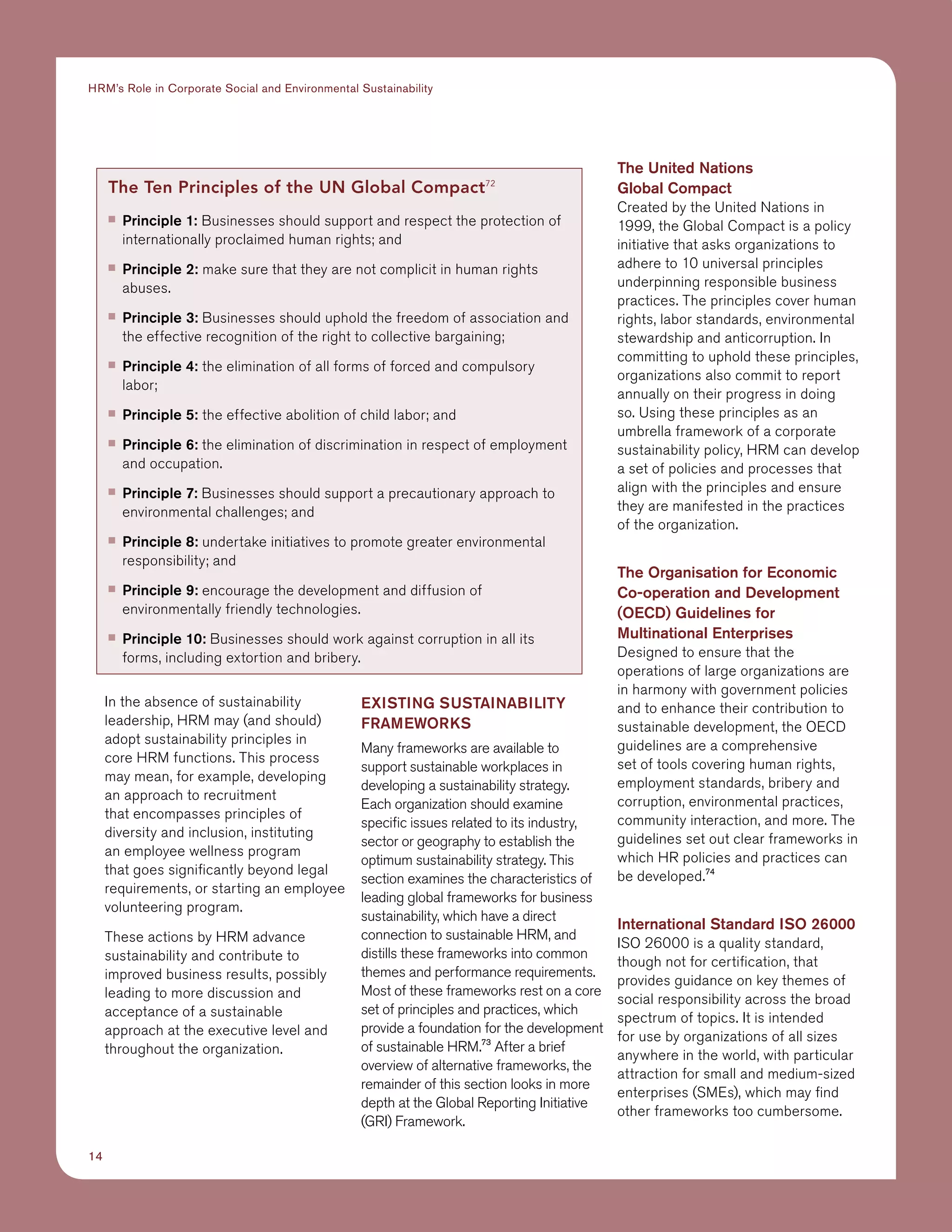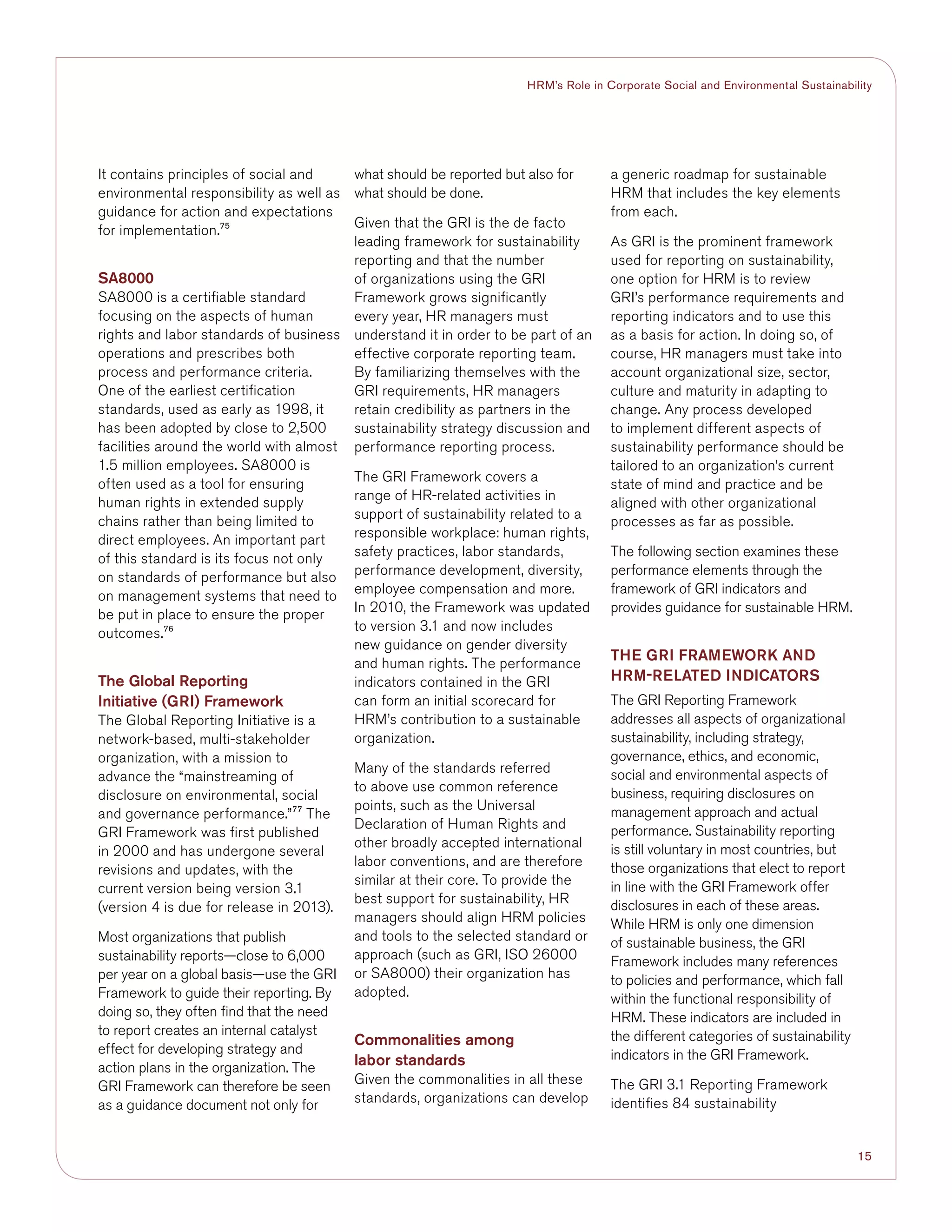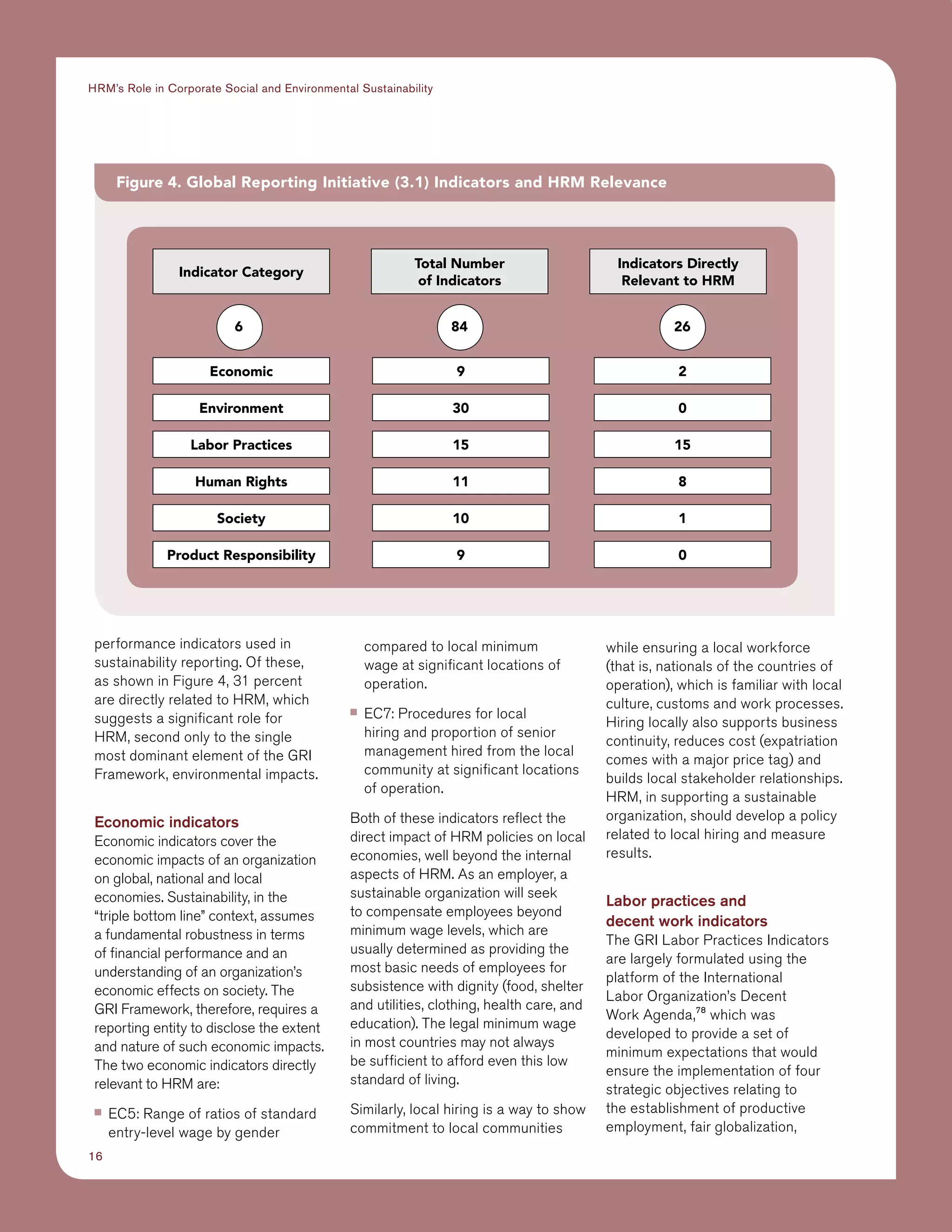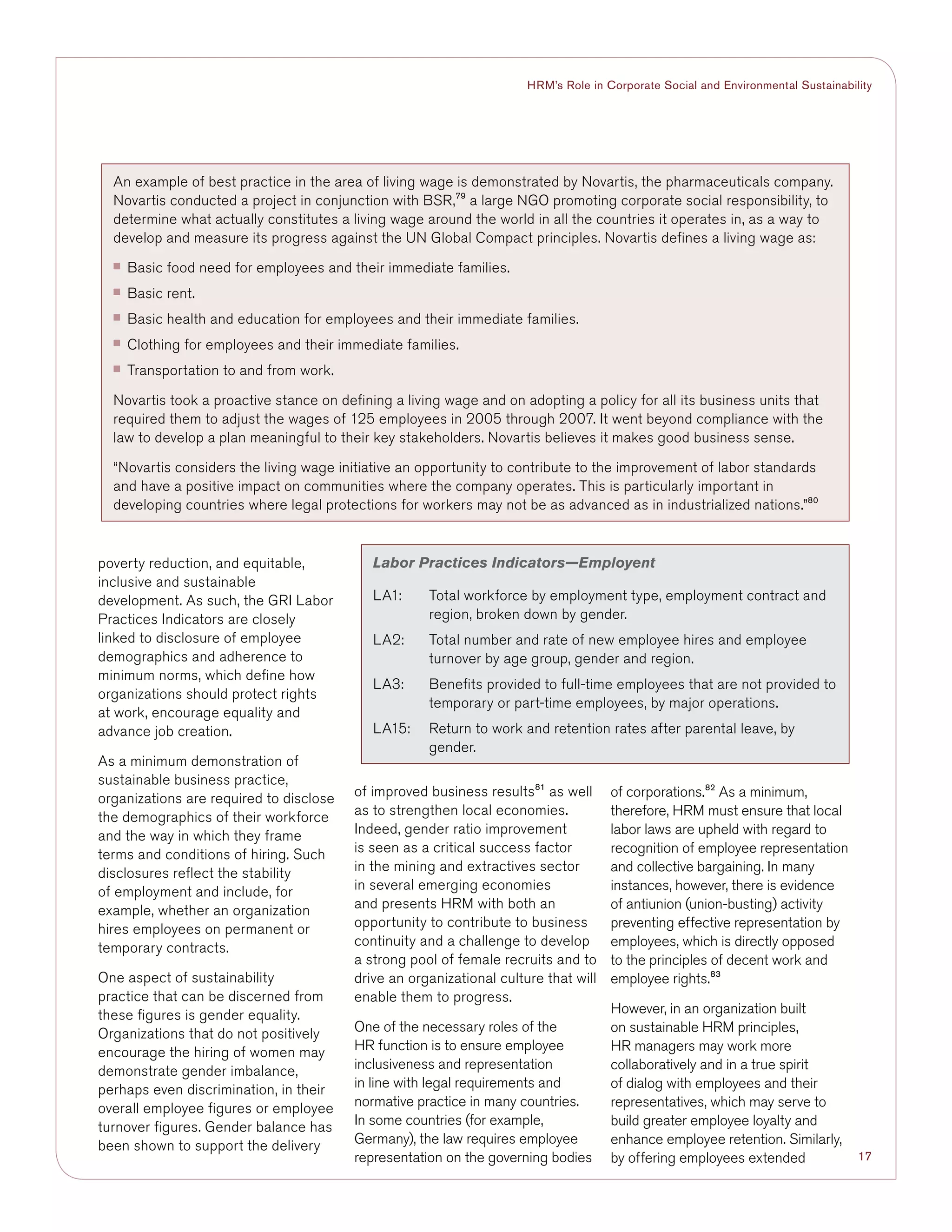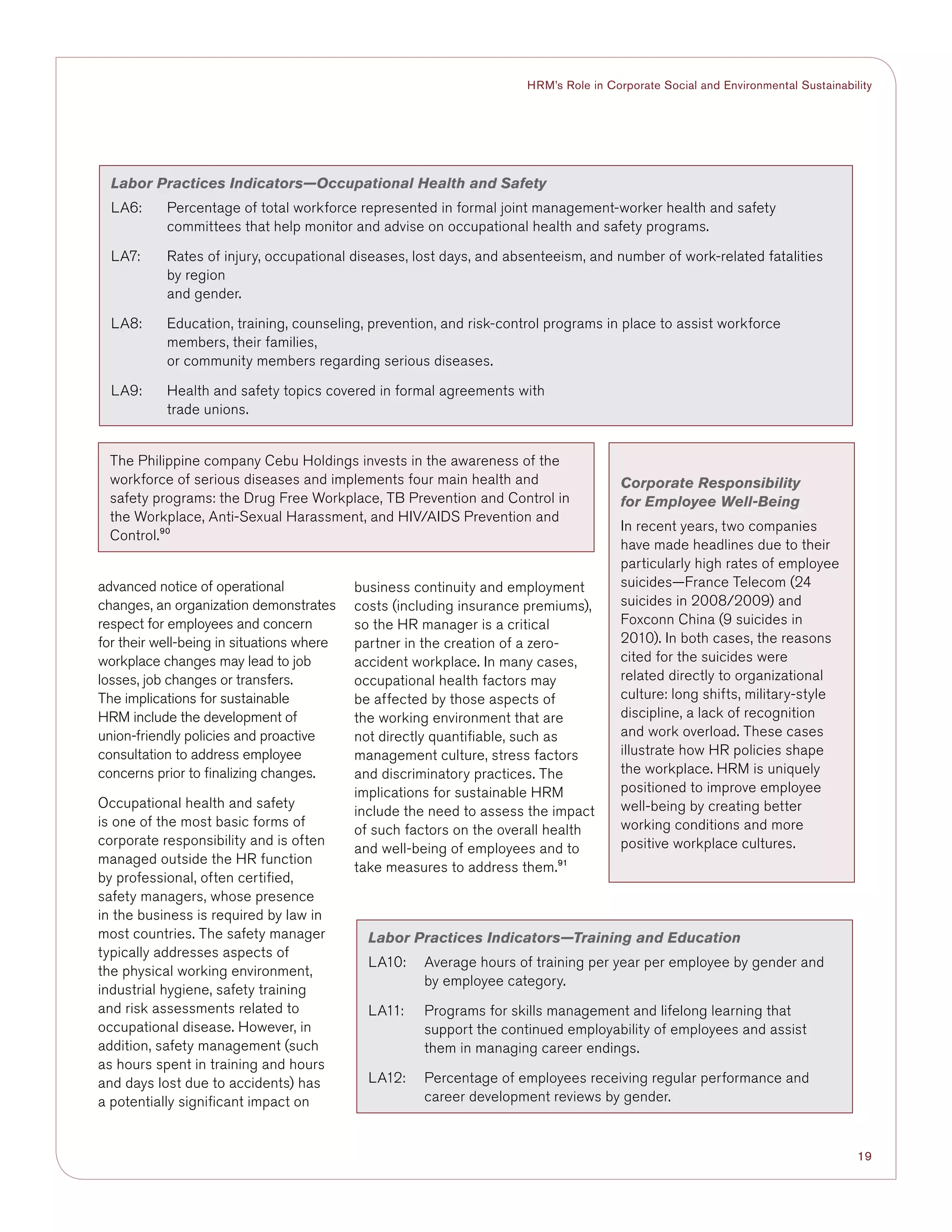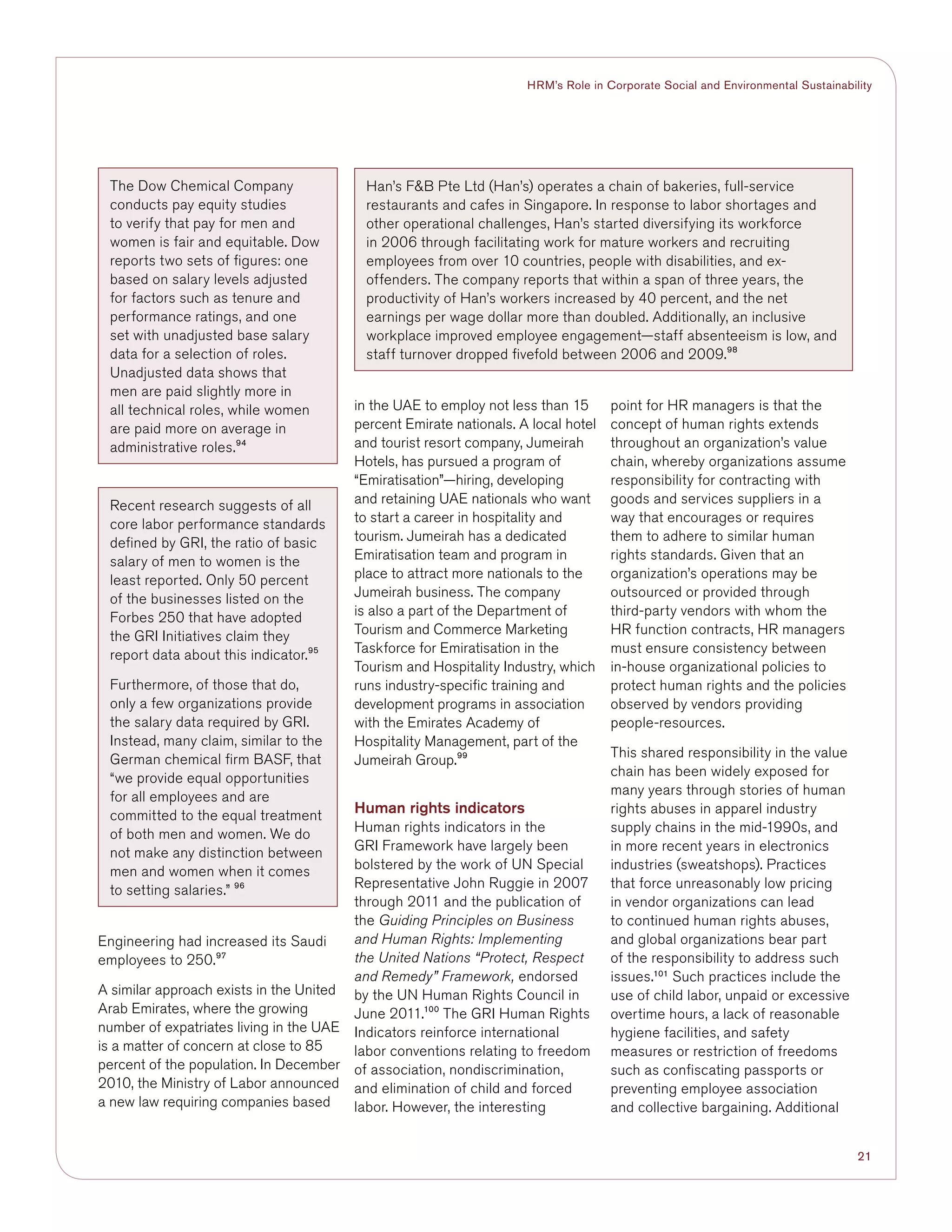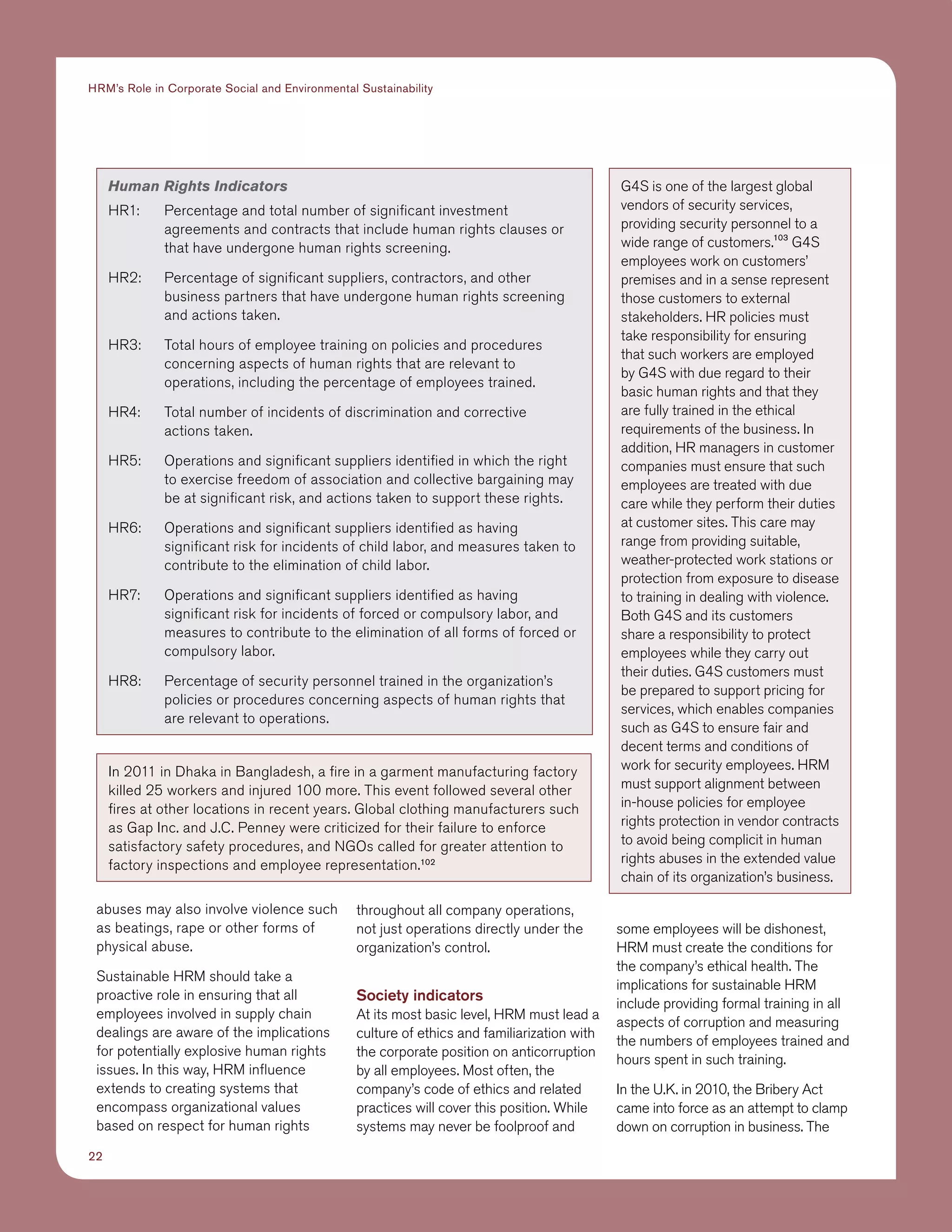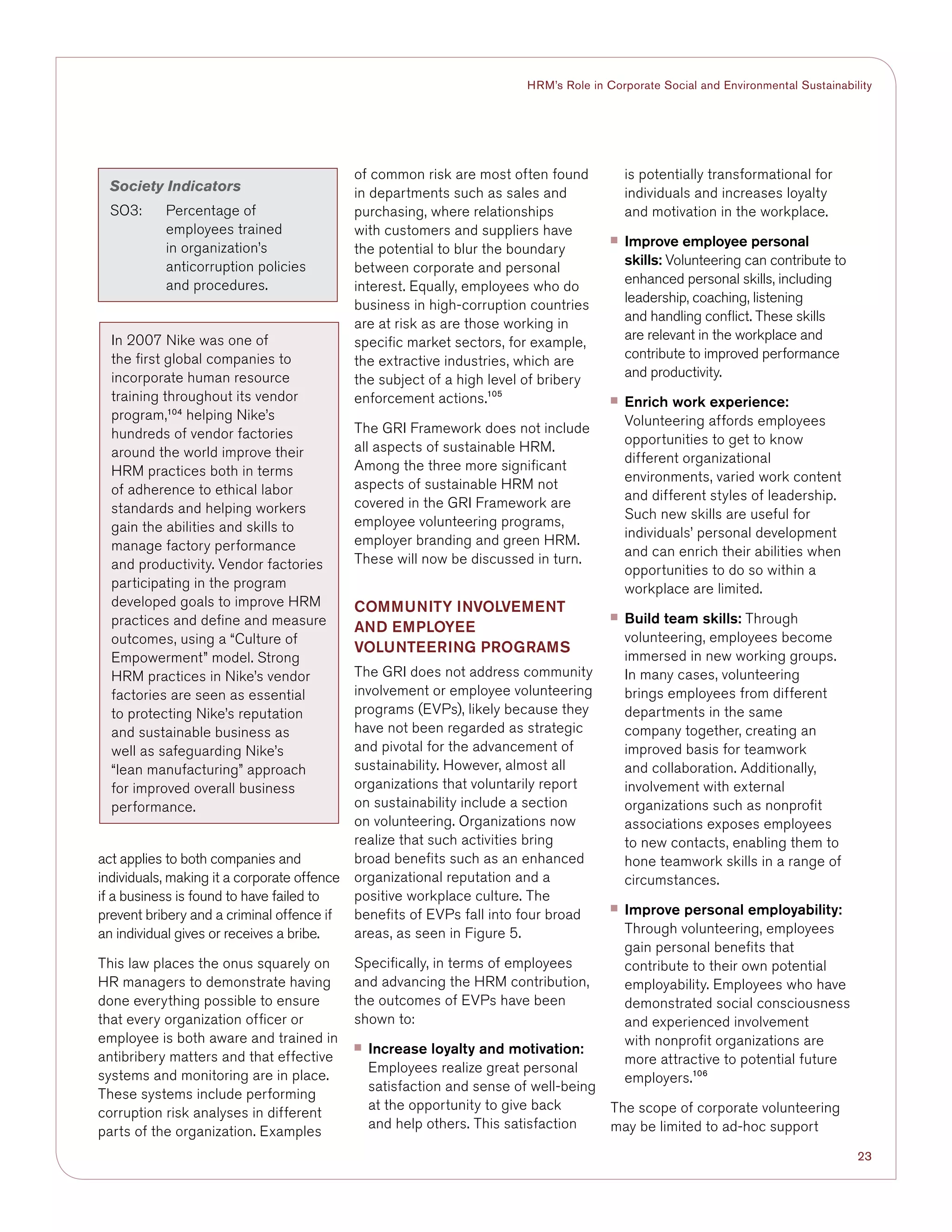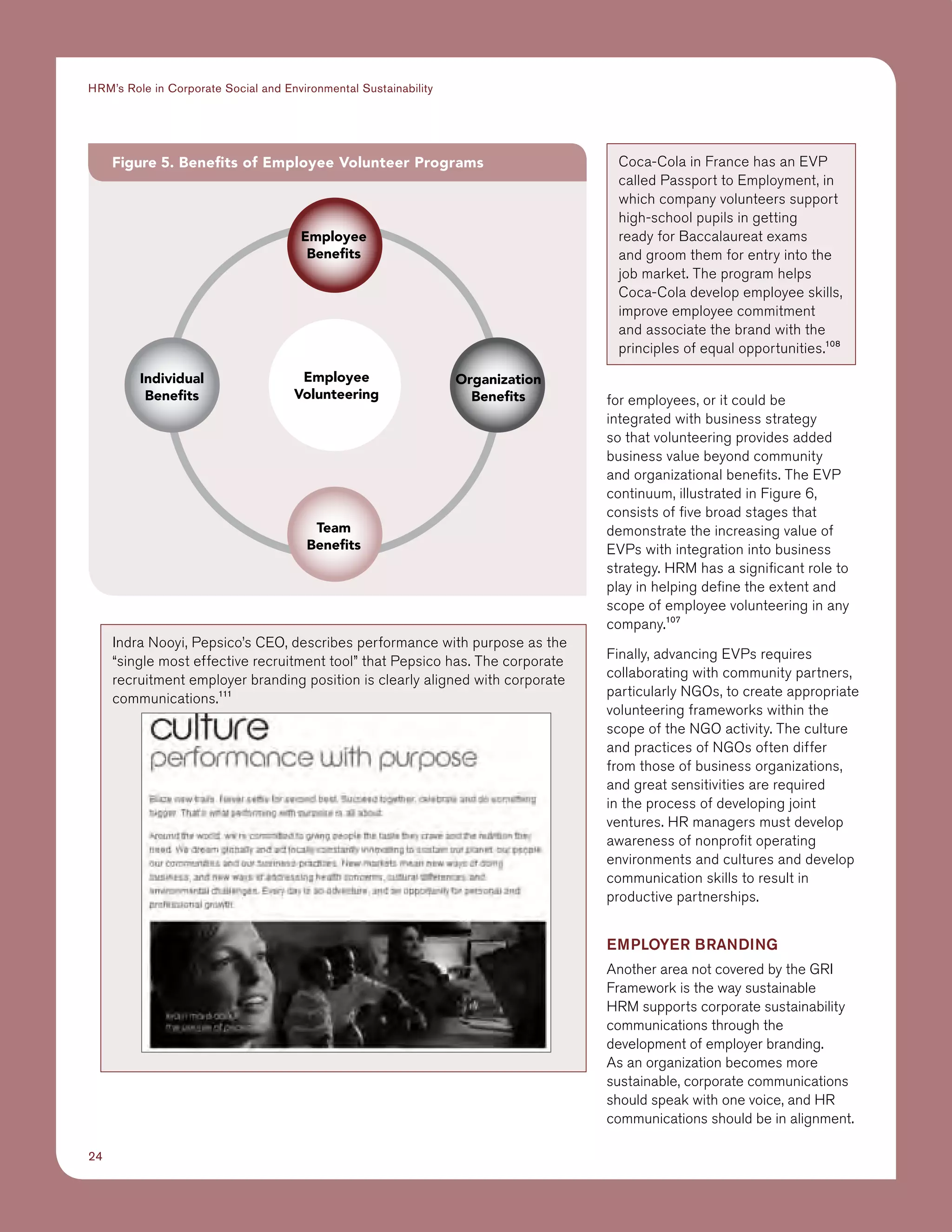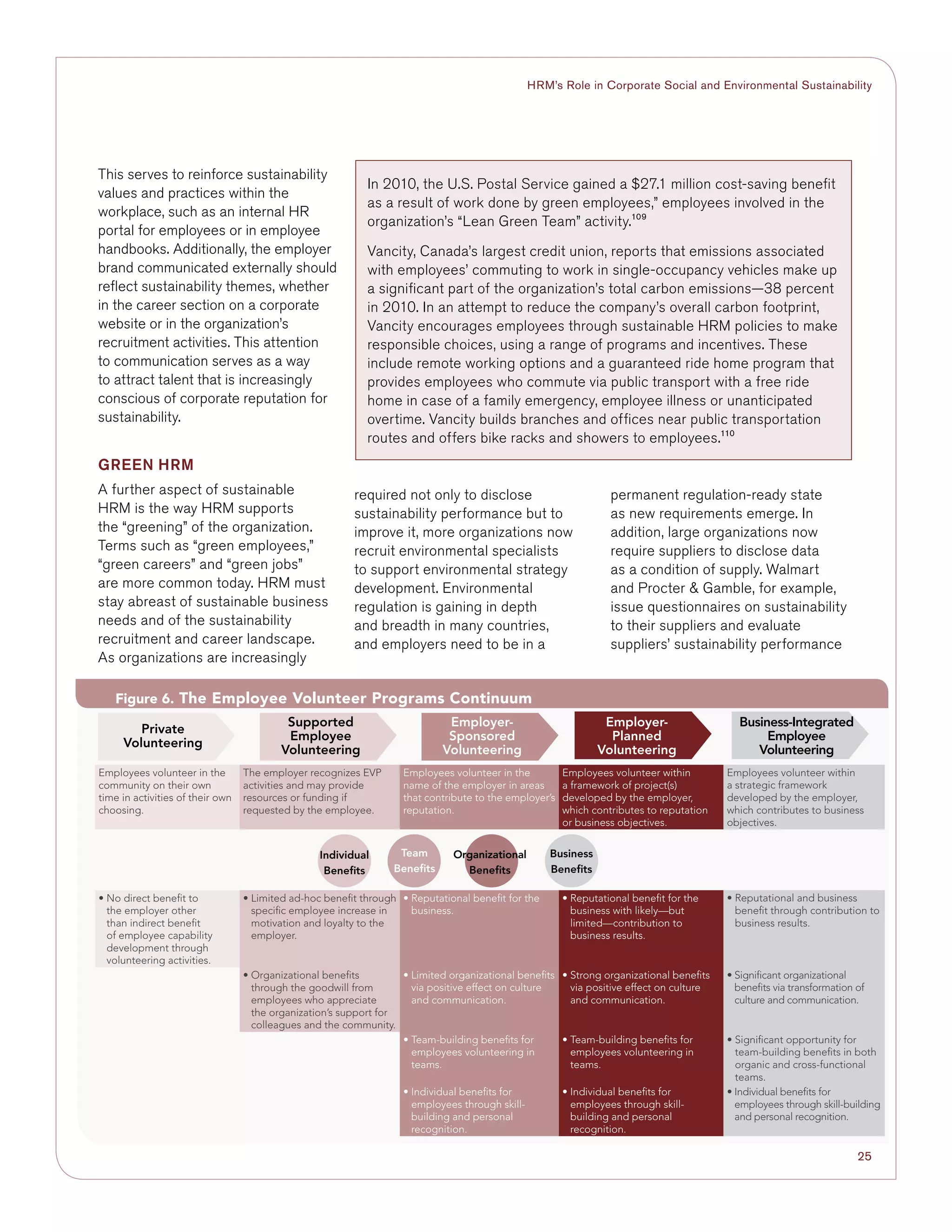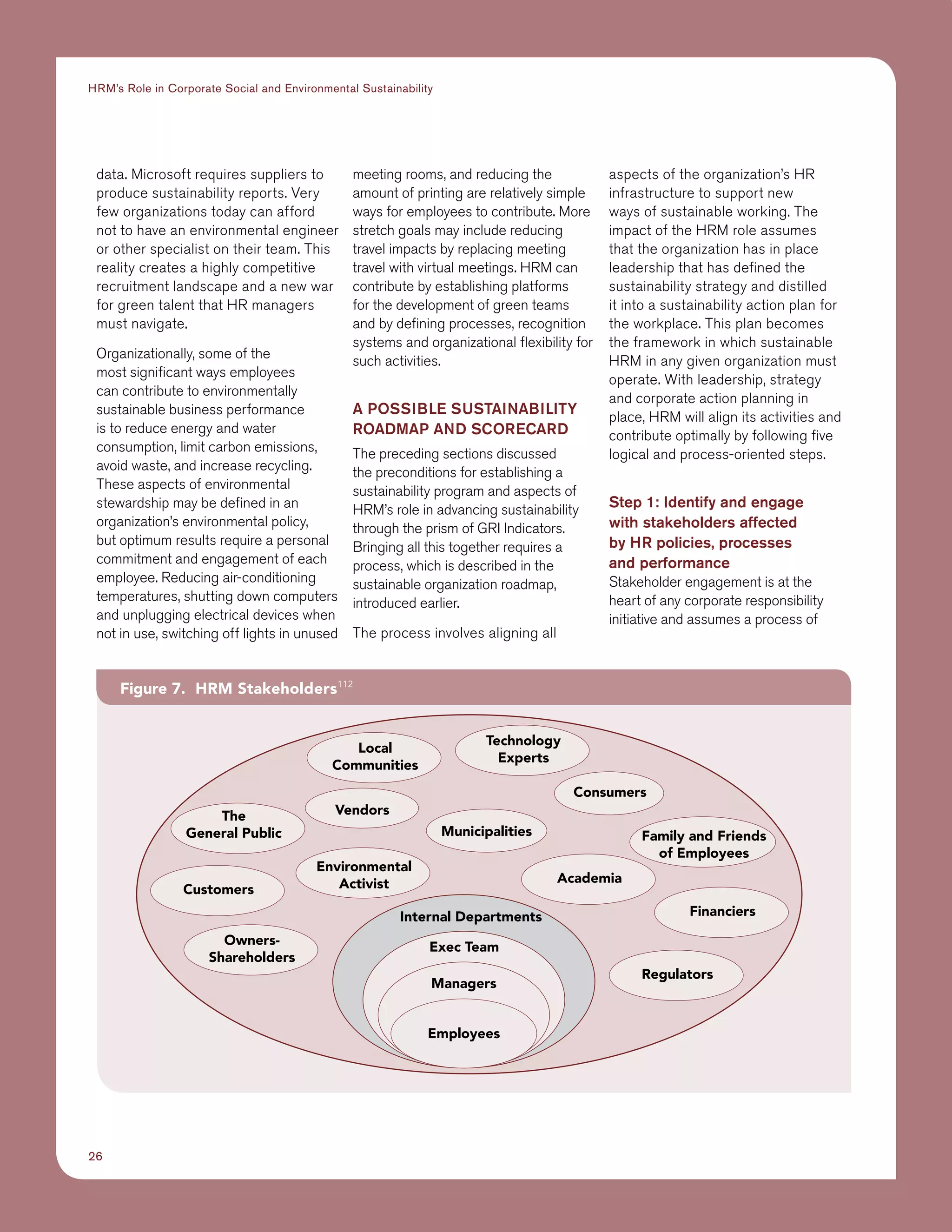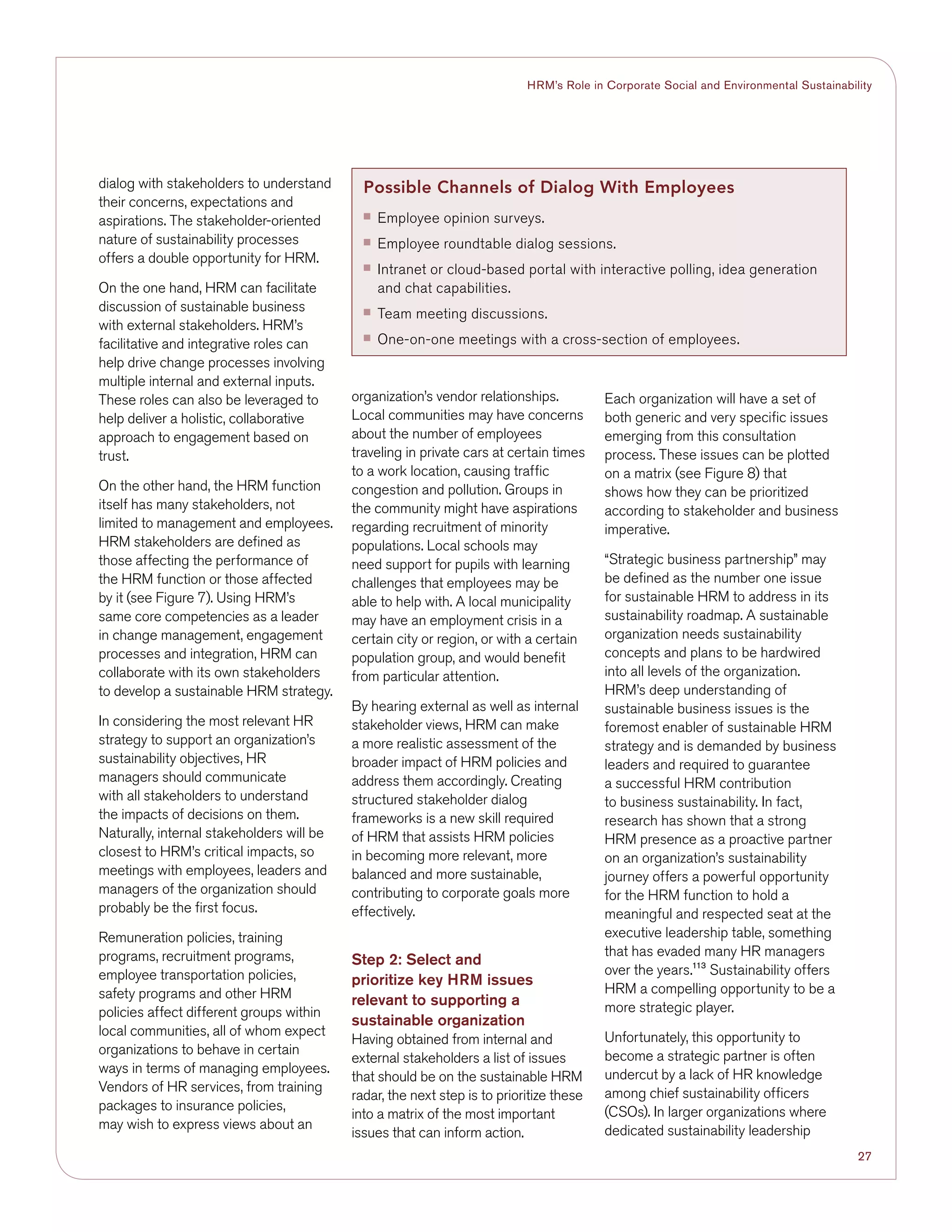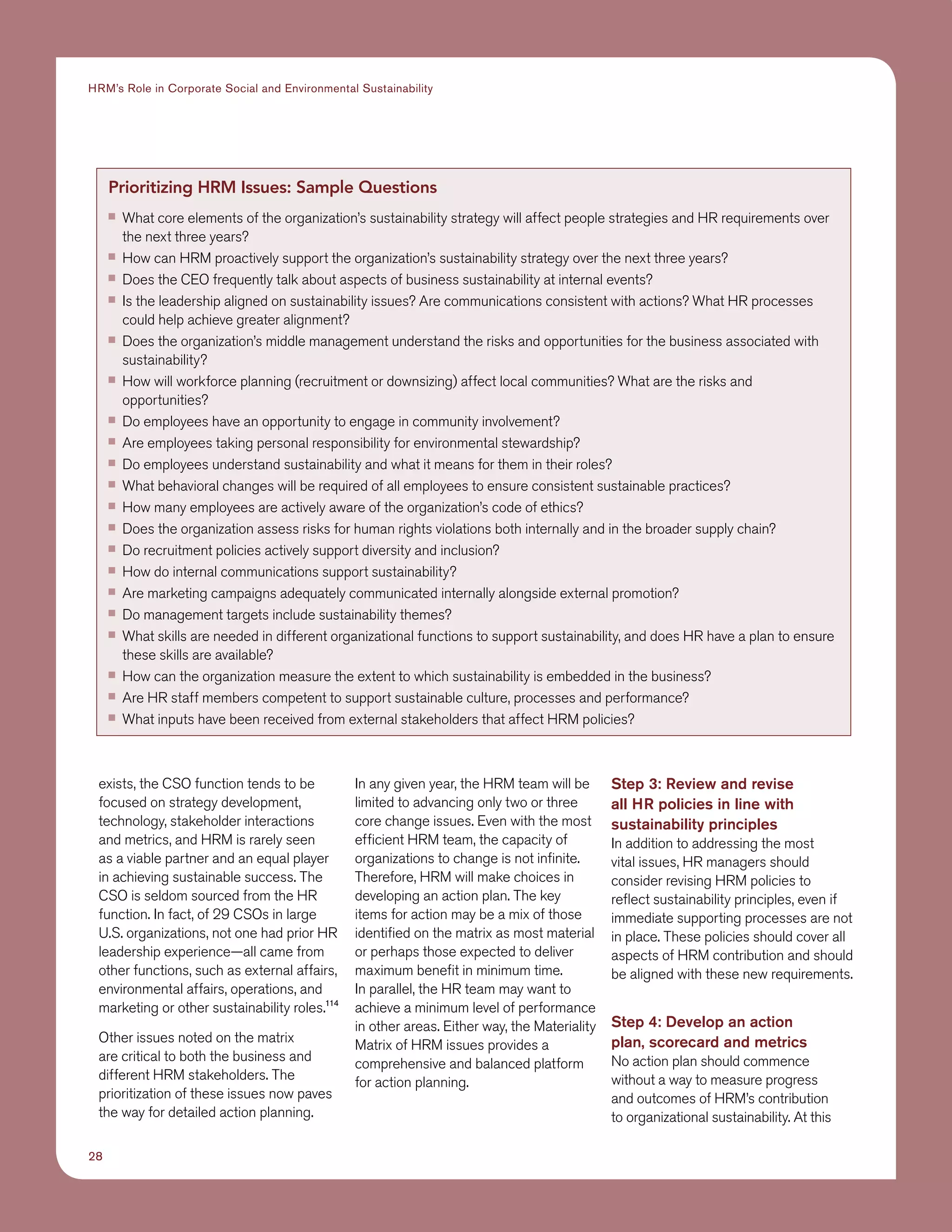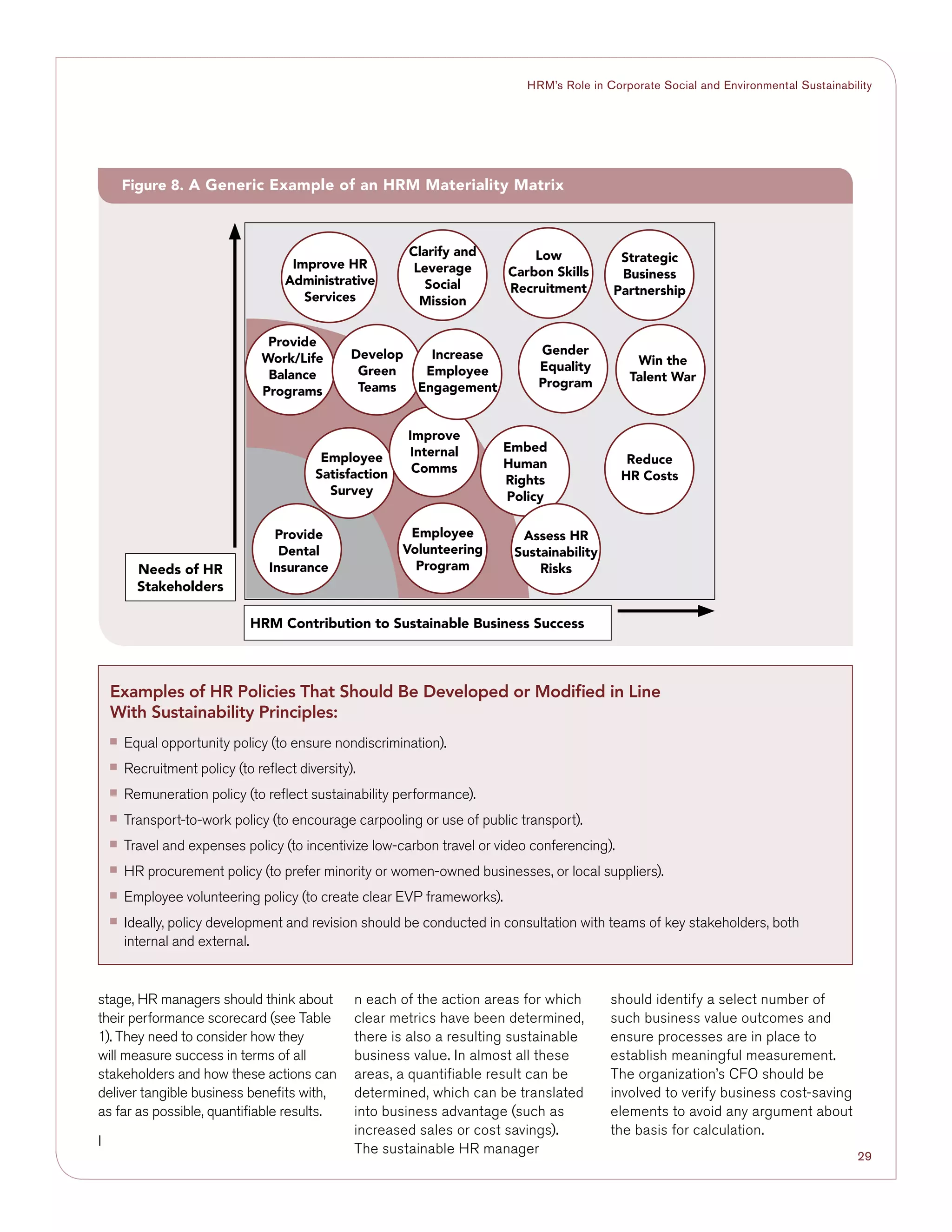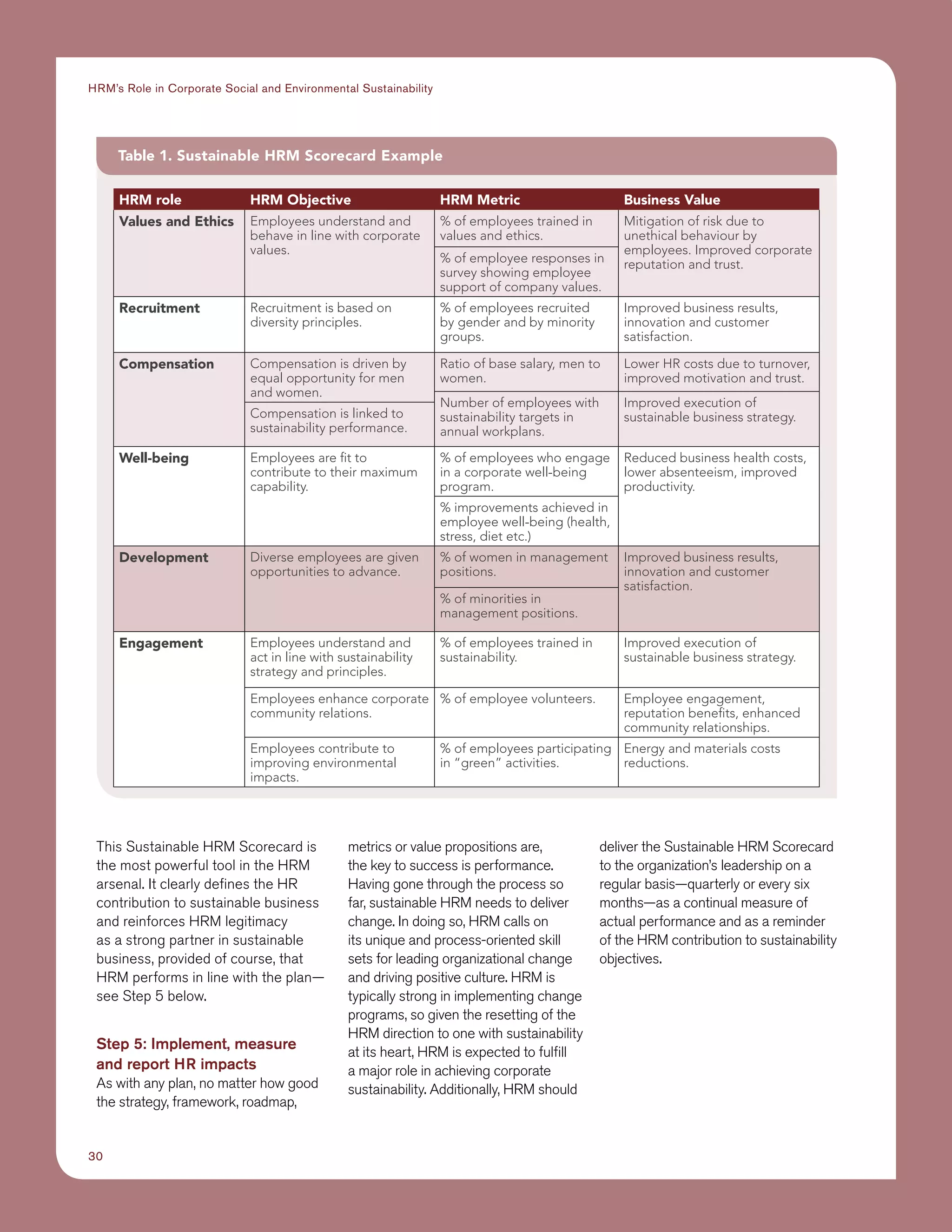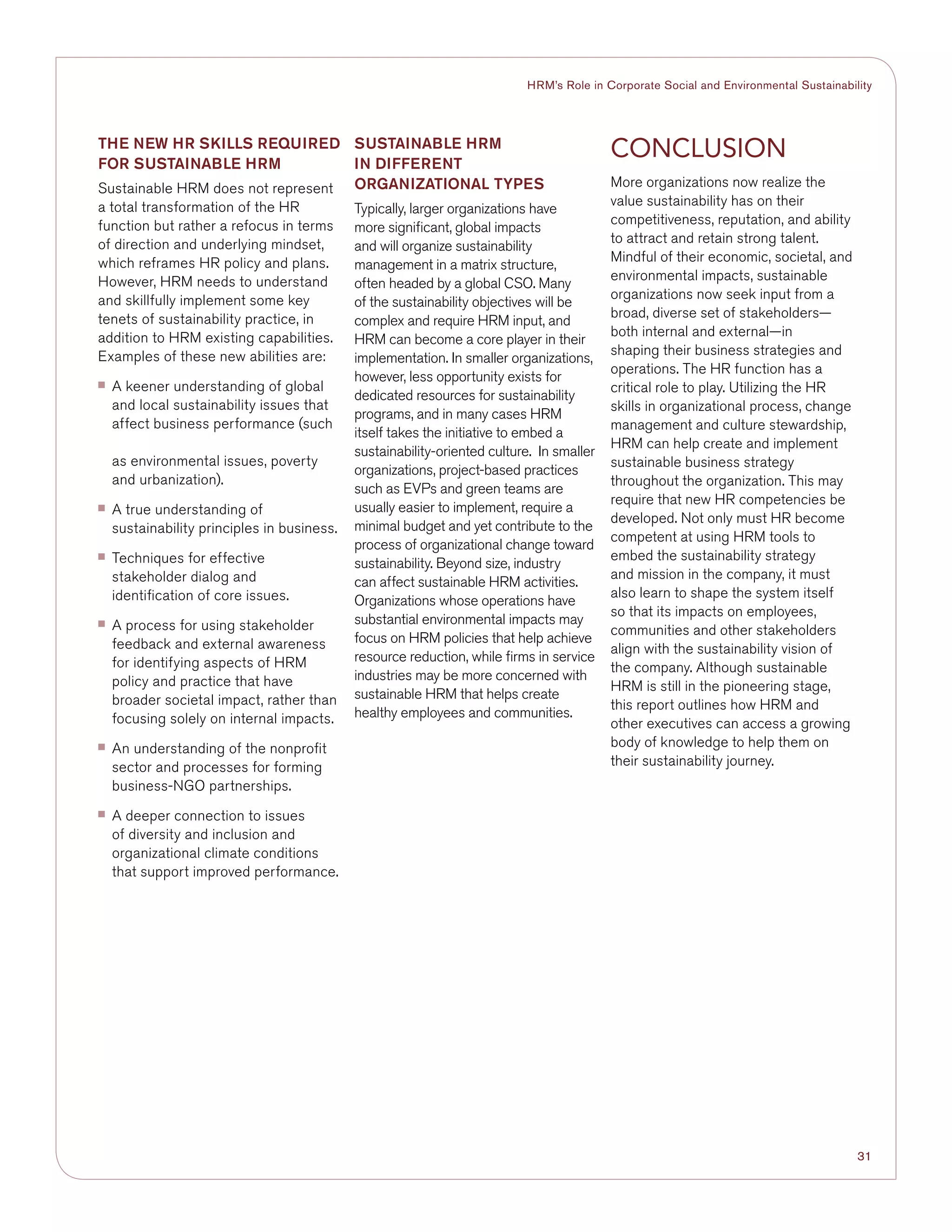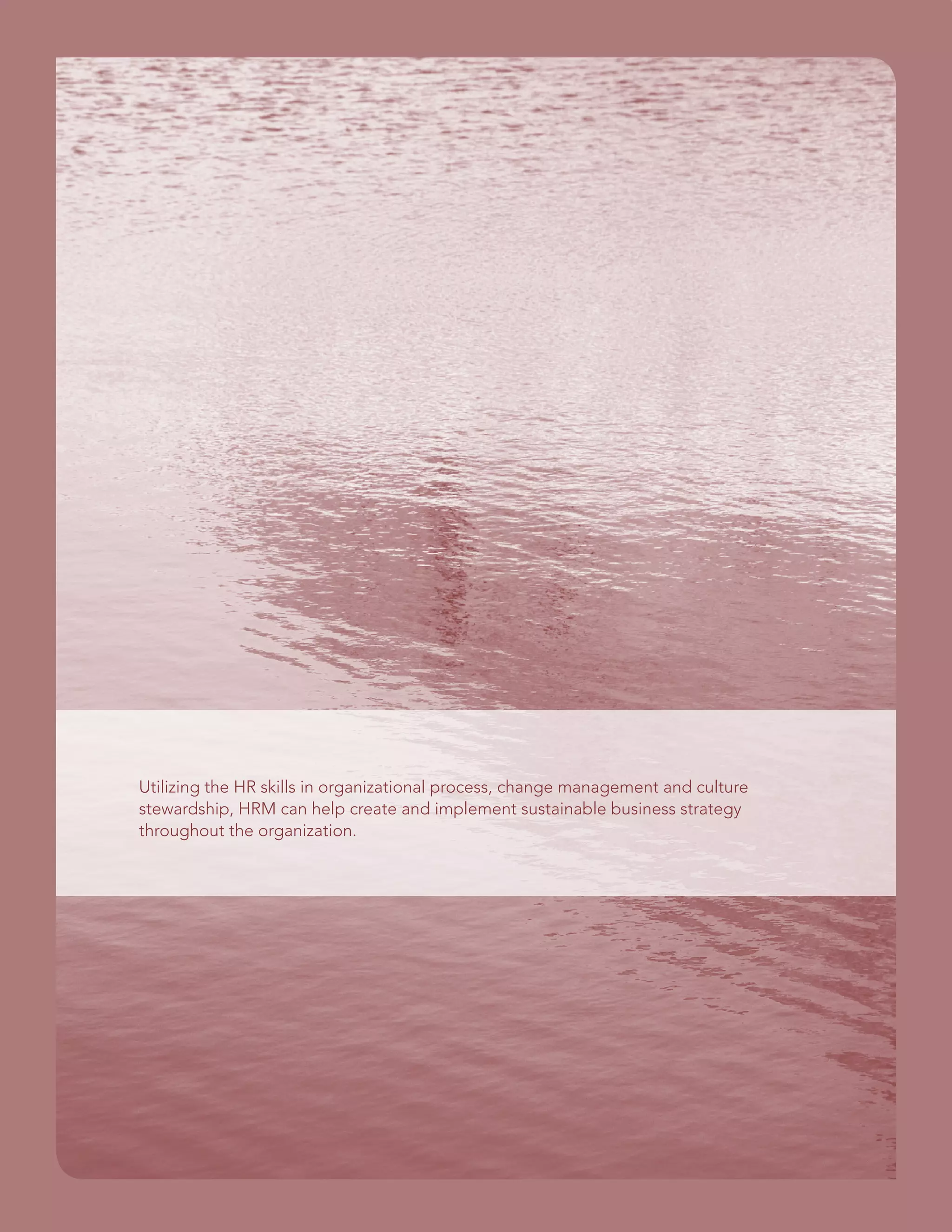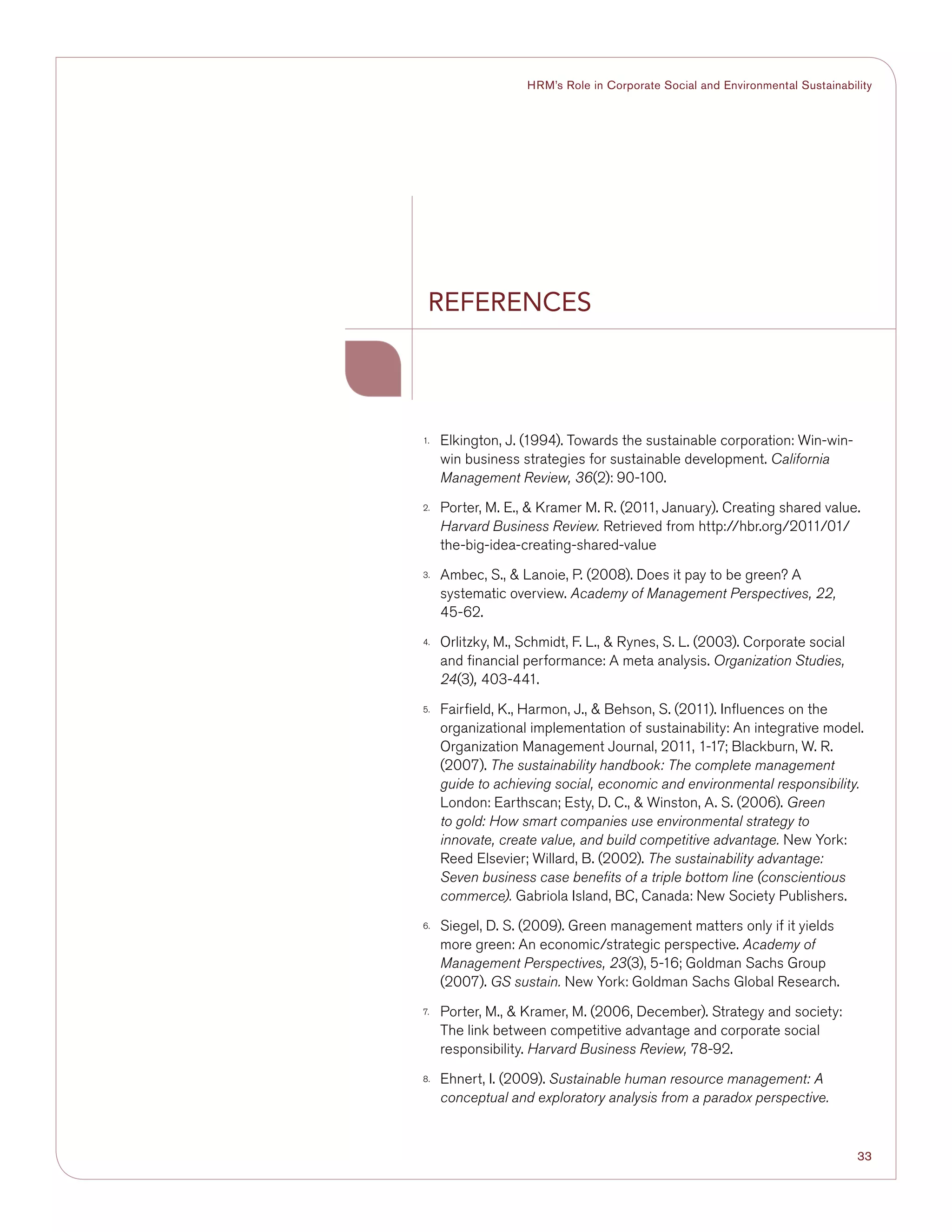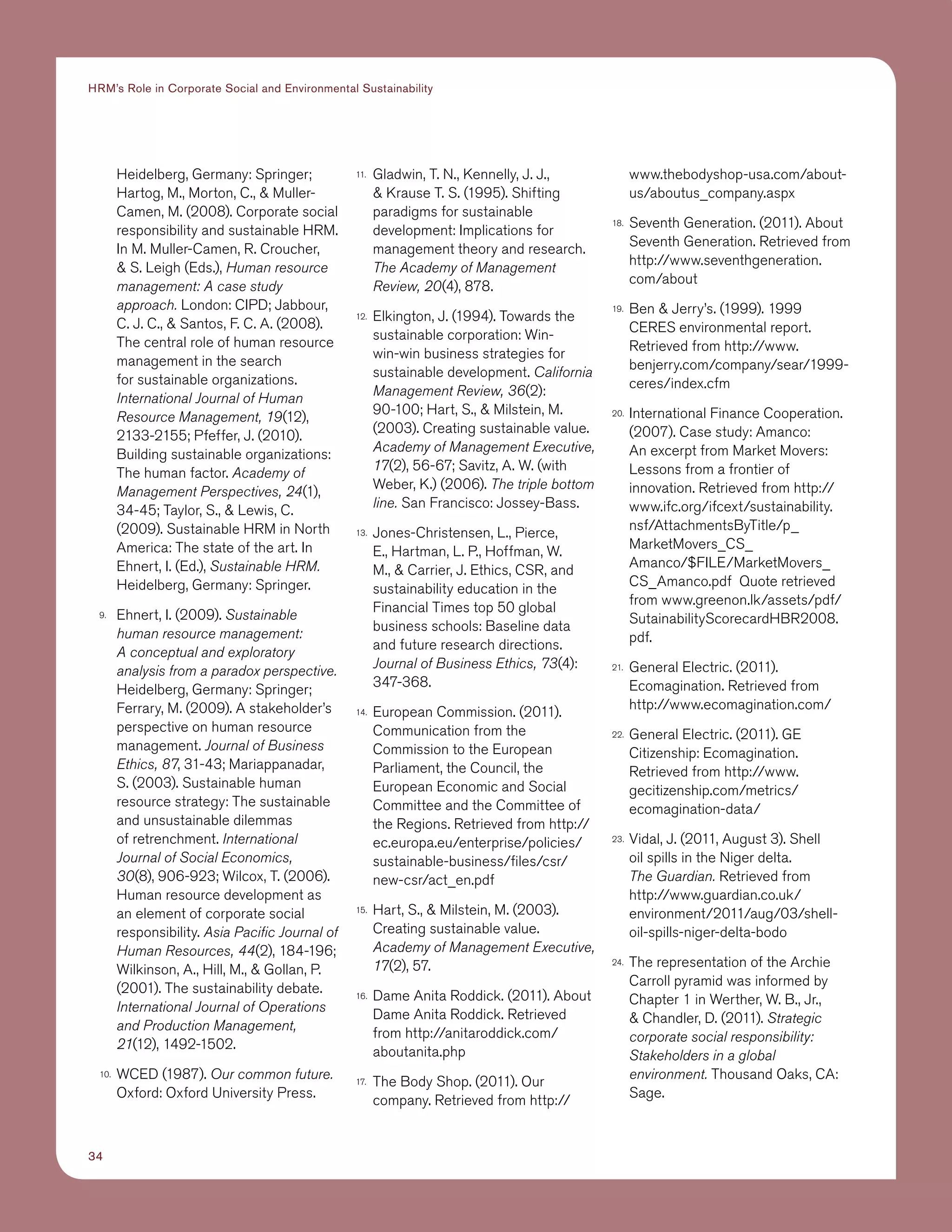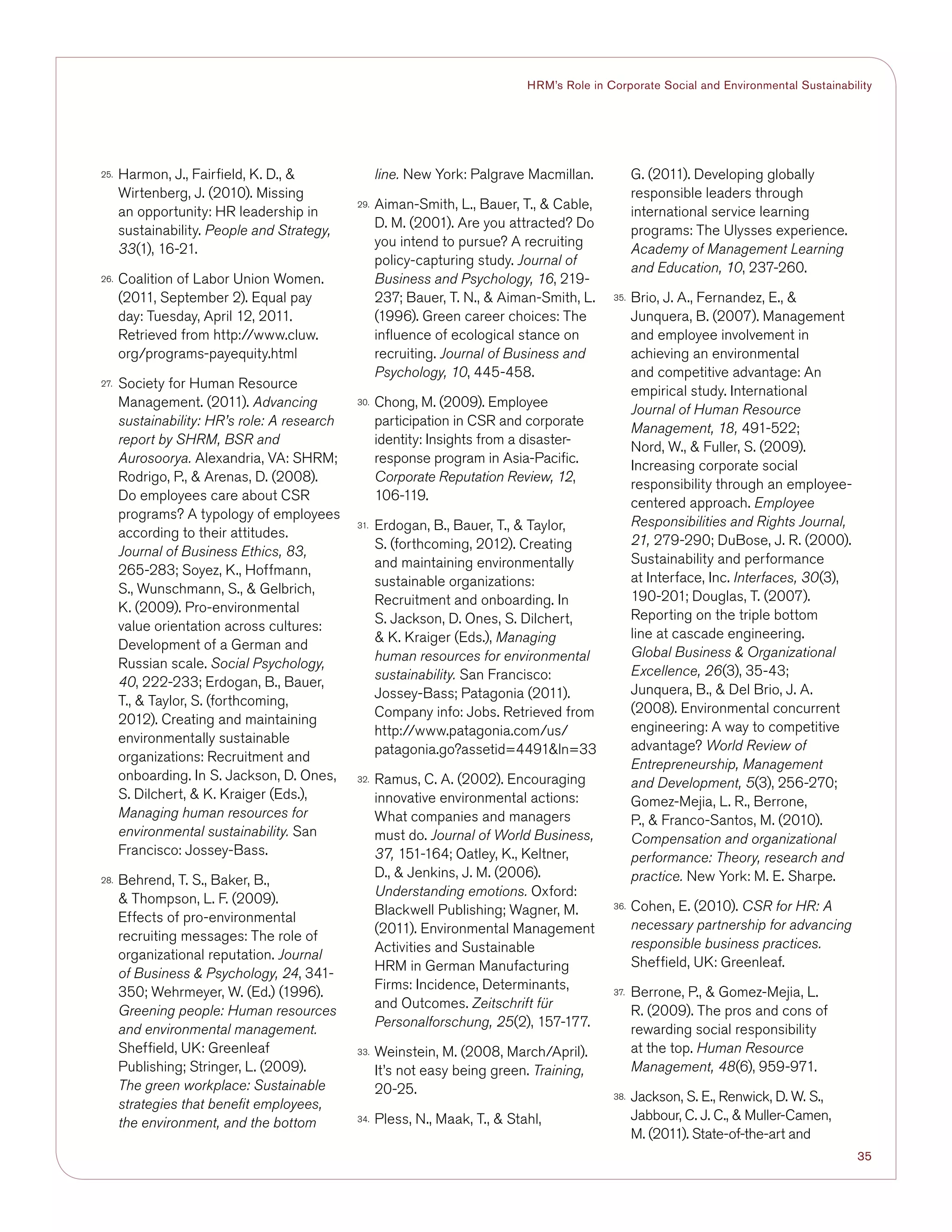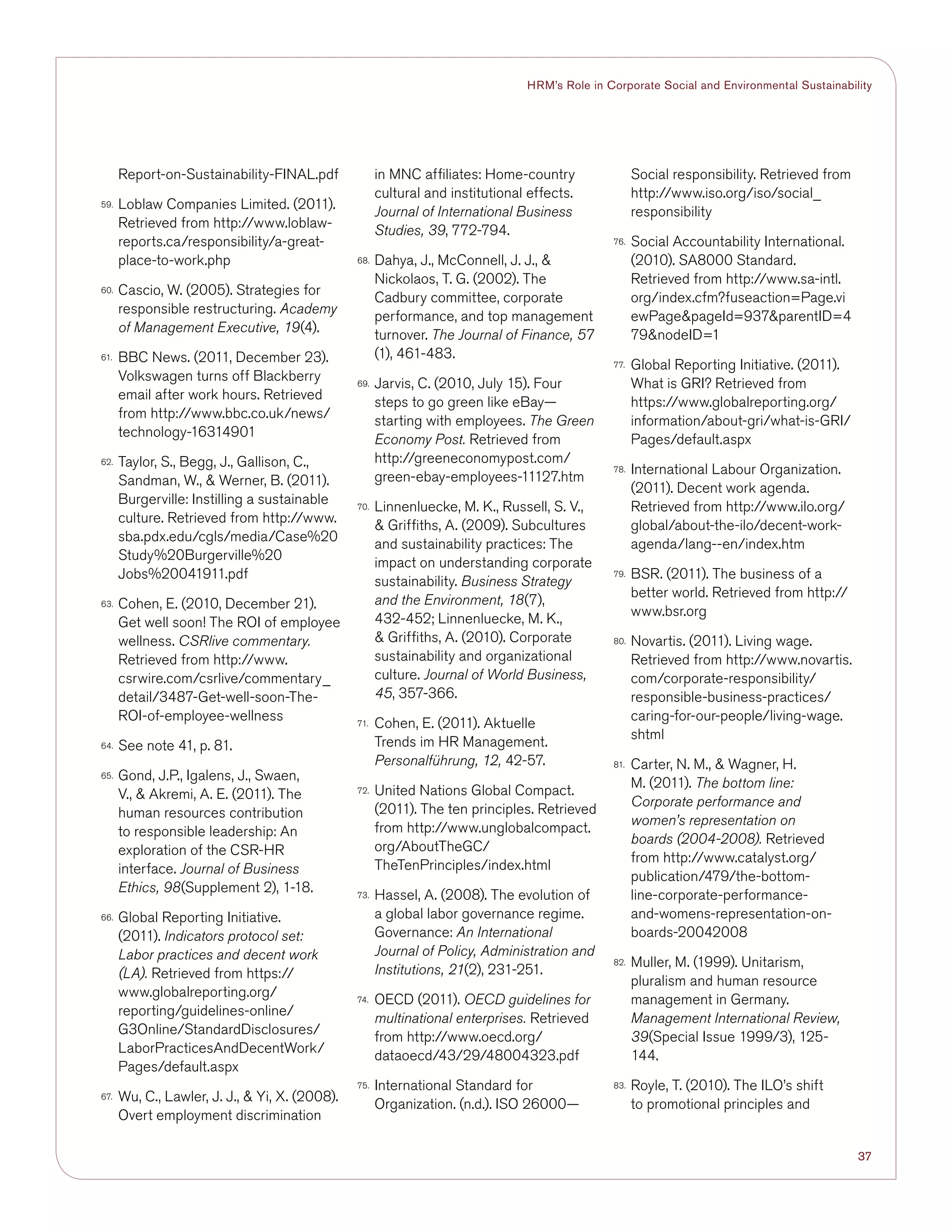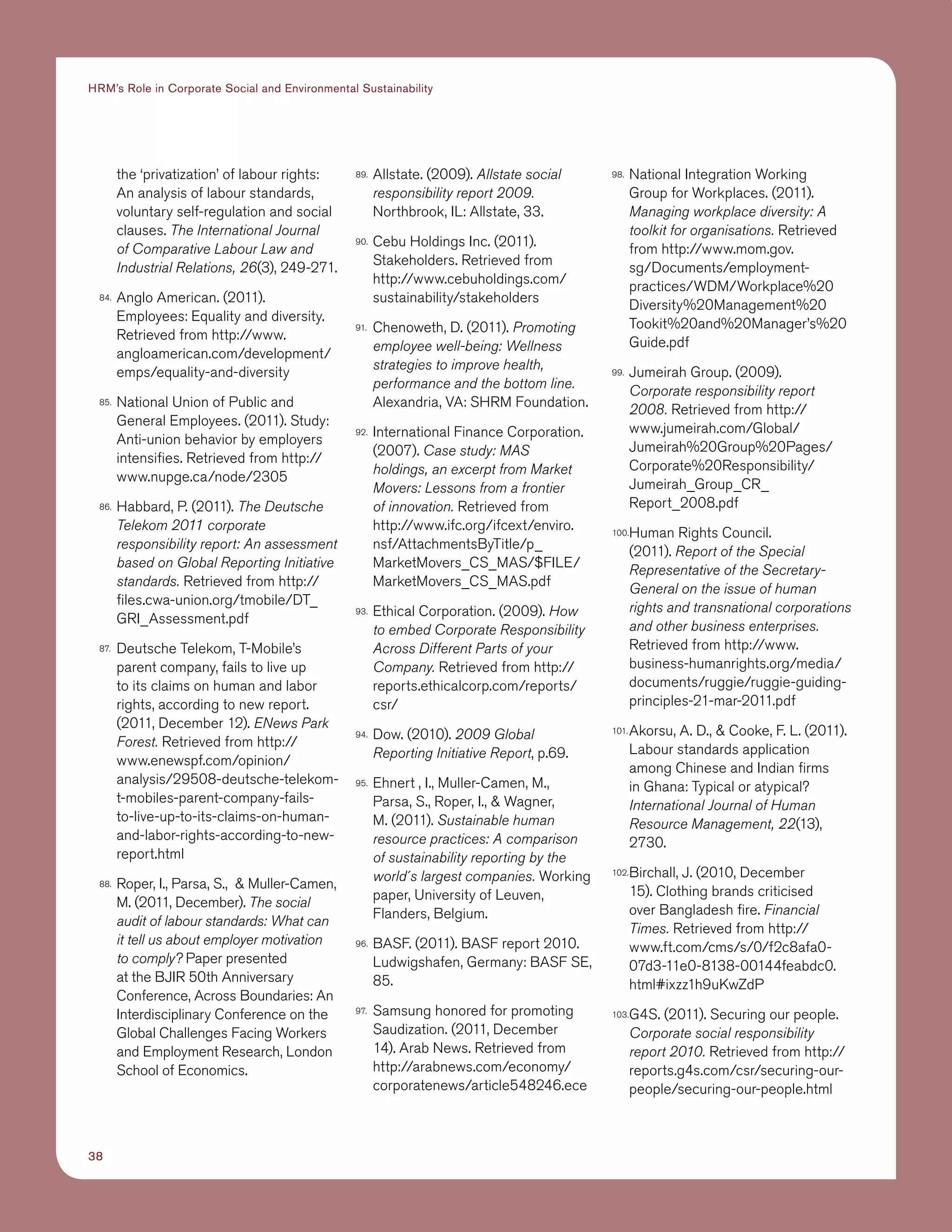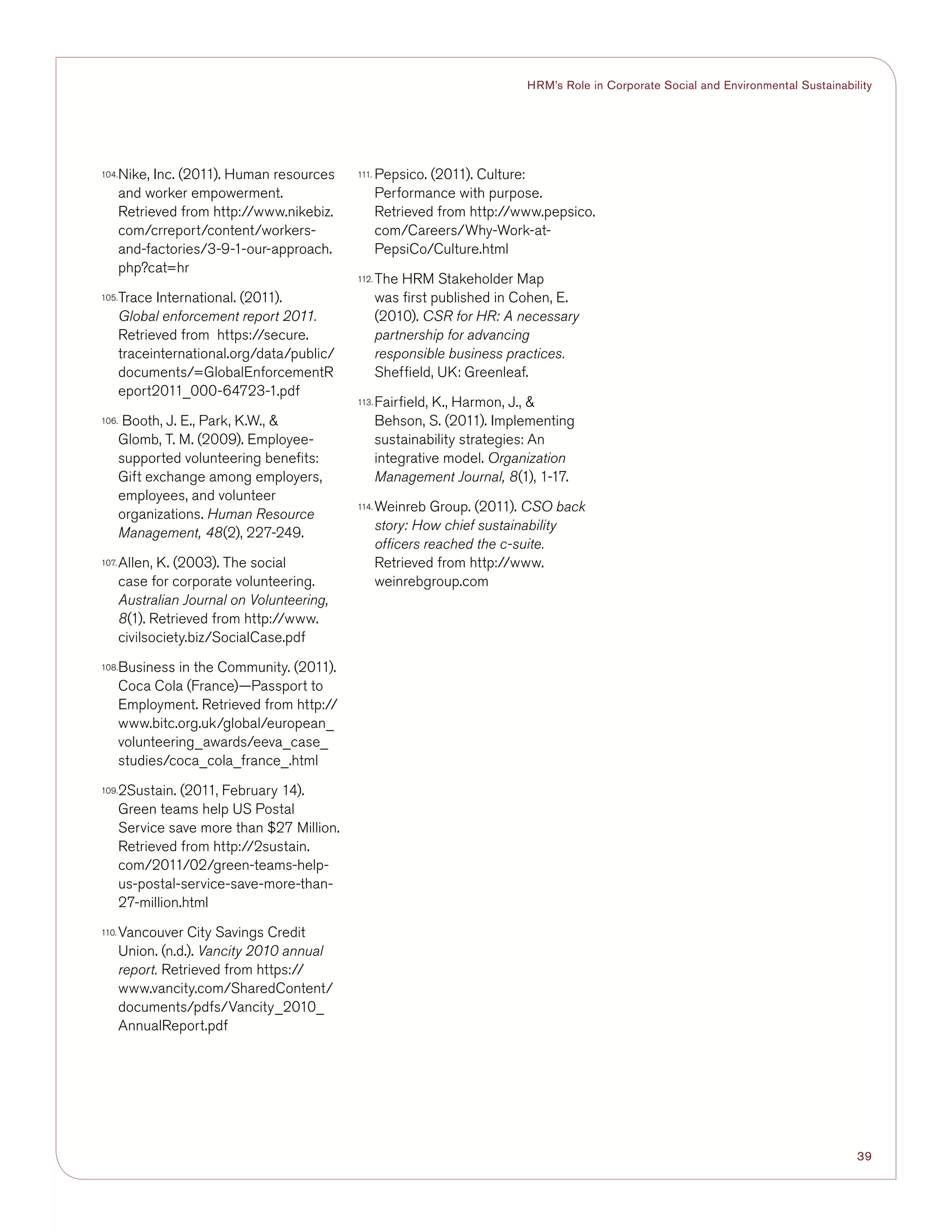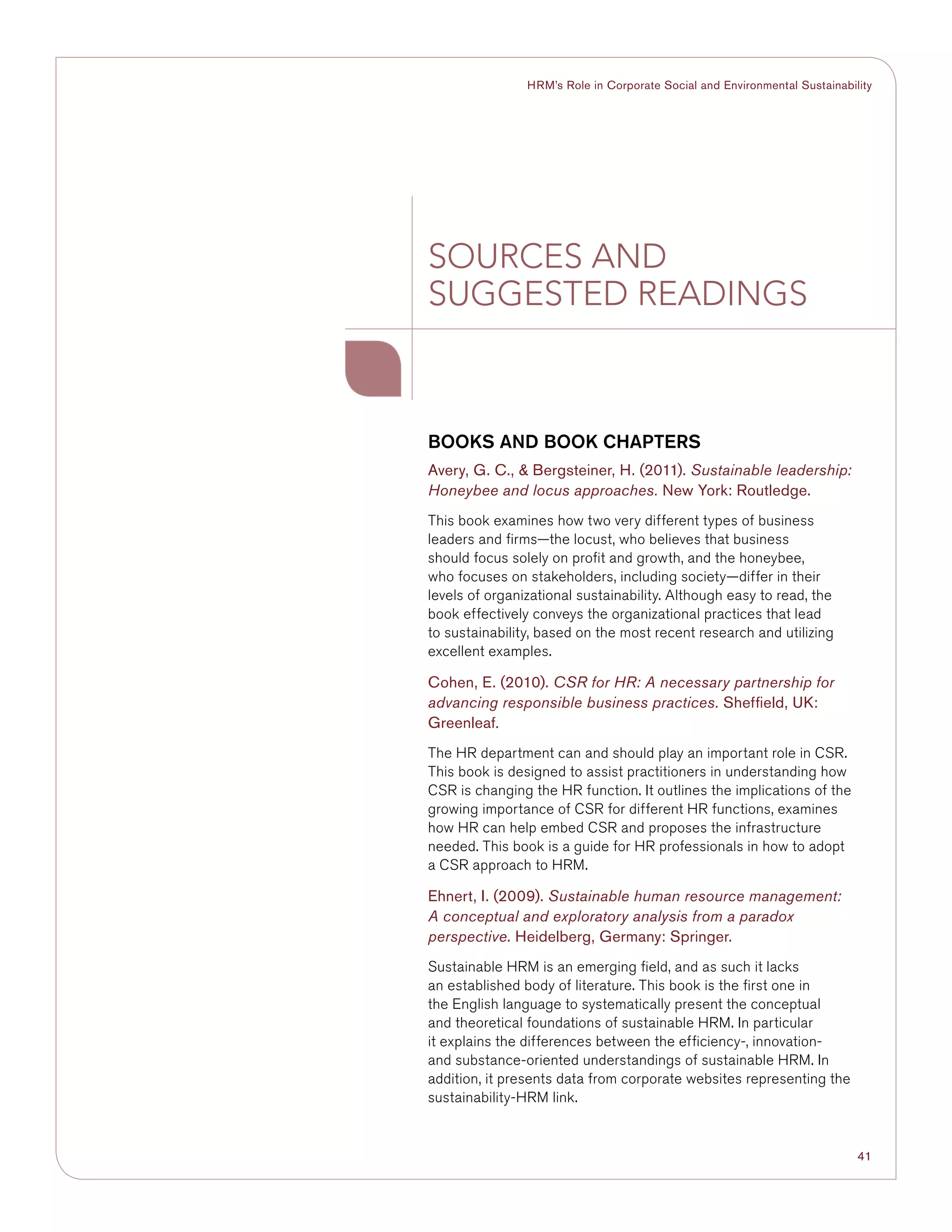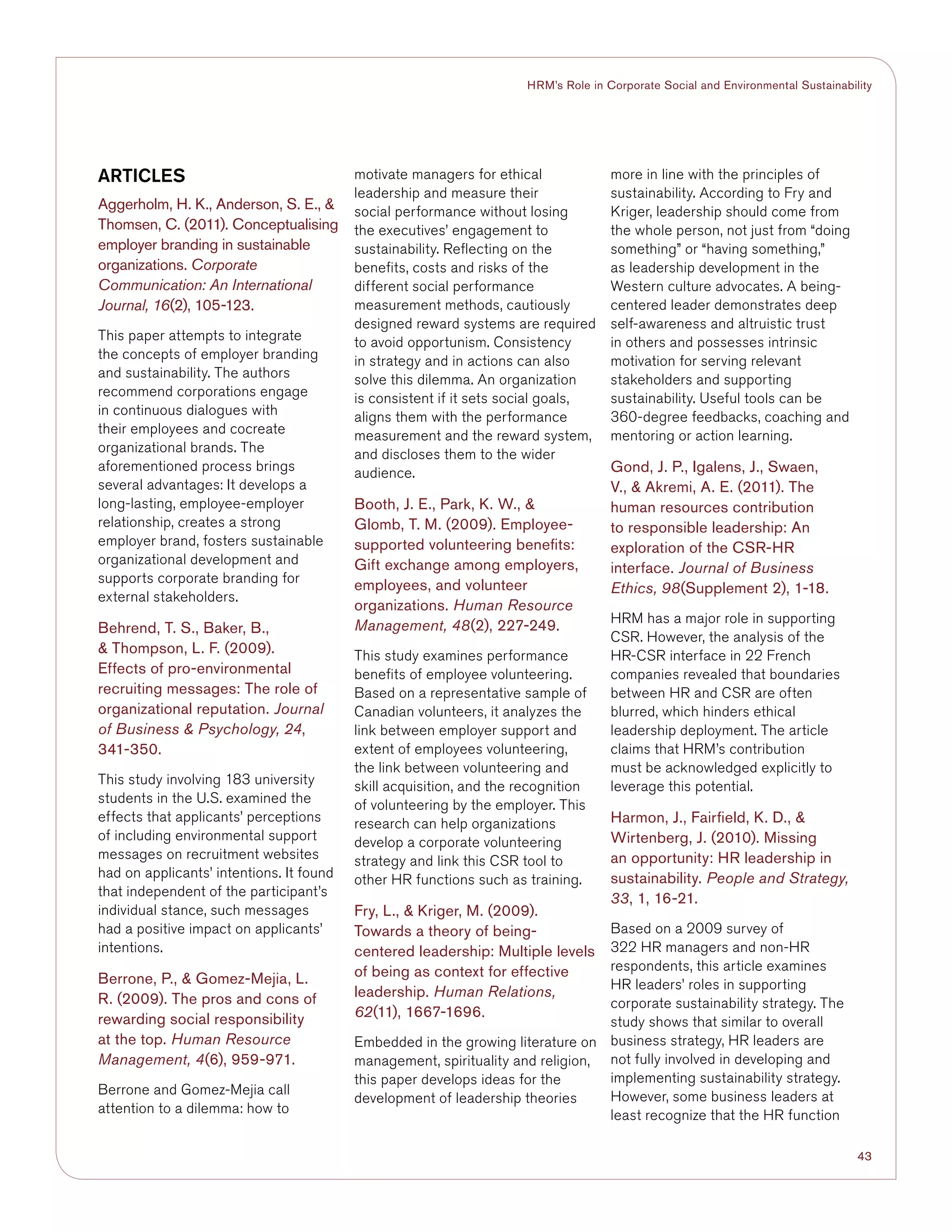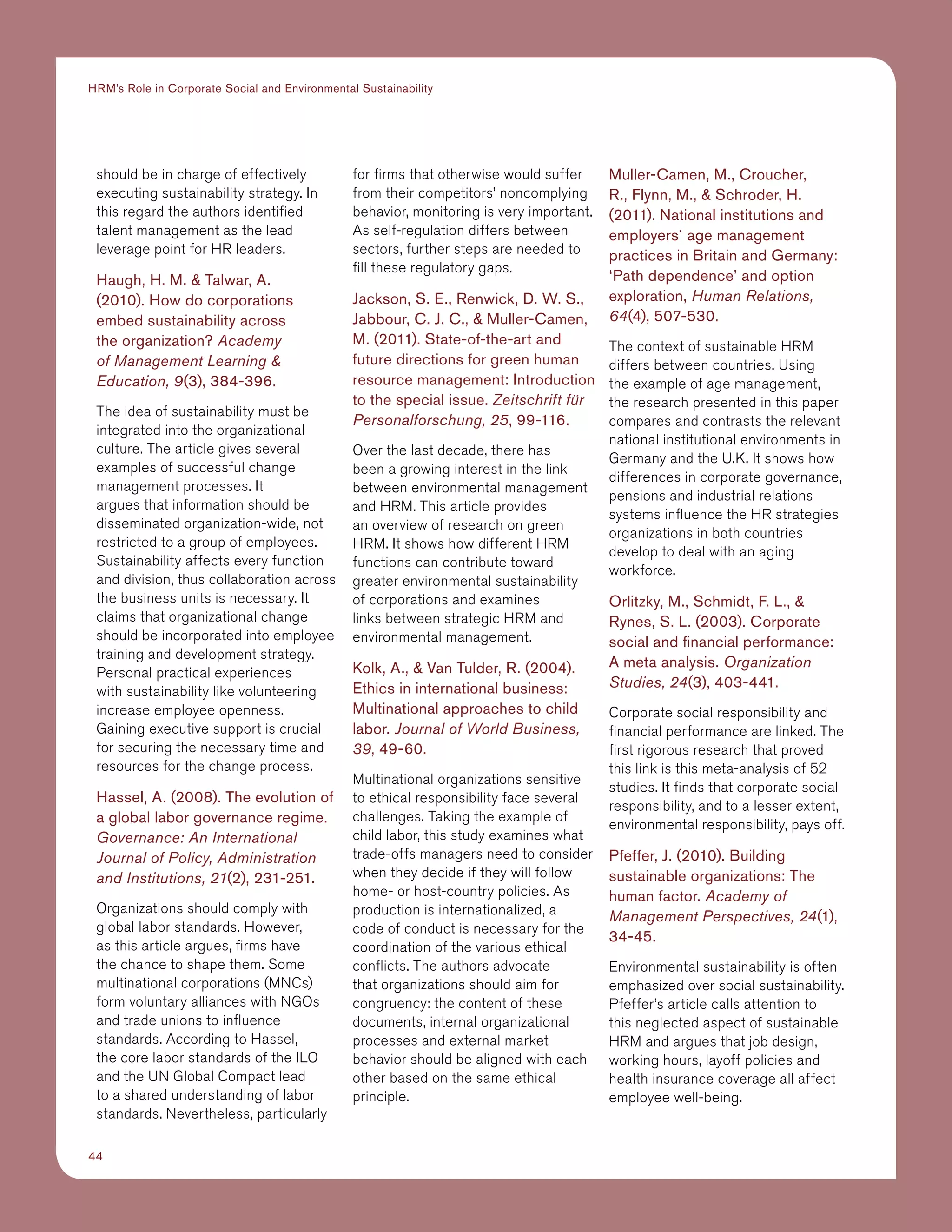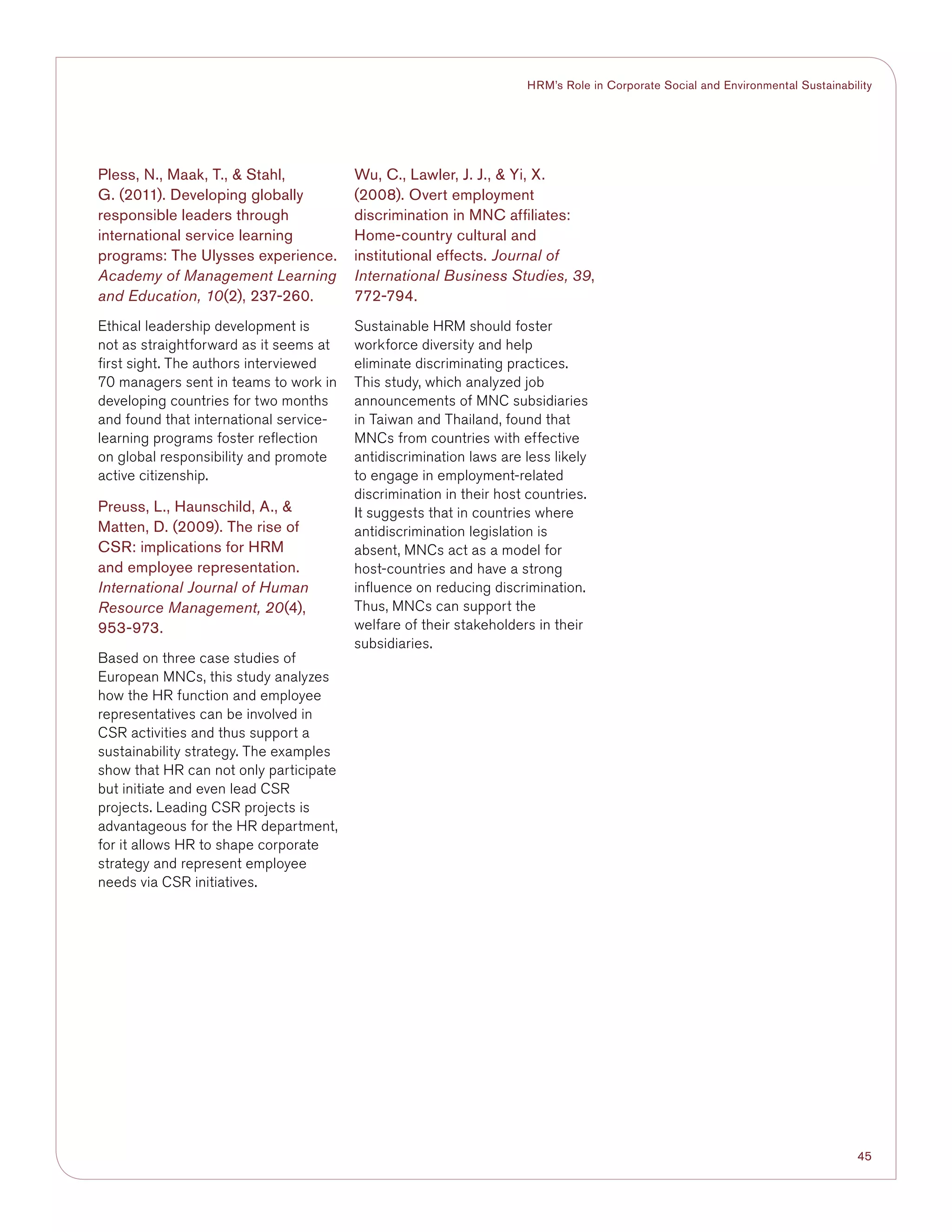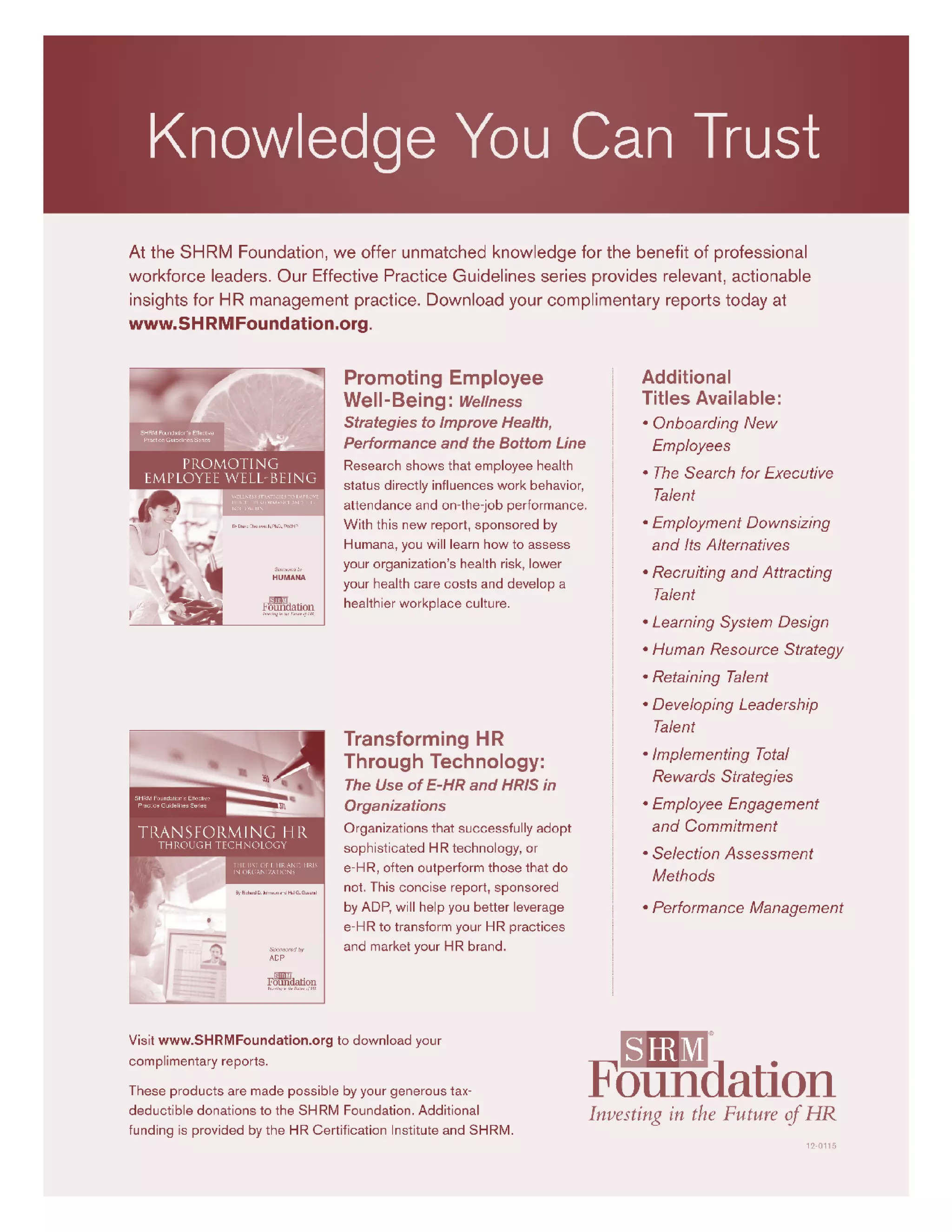HRM has two critical roles in supporting corporate sustainability:
1. Using HRM tools like performance management, training, and recruitment to embed sustainability across the organization's culture and practices.
2. Ensuring HRM's own core processes, like benefits and compensation, are grounded in sustainability principles.
HRM is well-positioned to help lead sustainability efforts given its skills in change management, culture-shaping, and process implementation. For HRM to fully support sustainability, organizational leaders must involve HR in sustainability planning and hold HR accountable for sustainable practices.
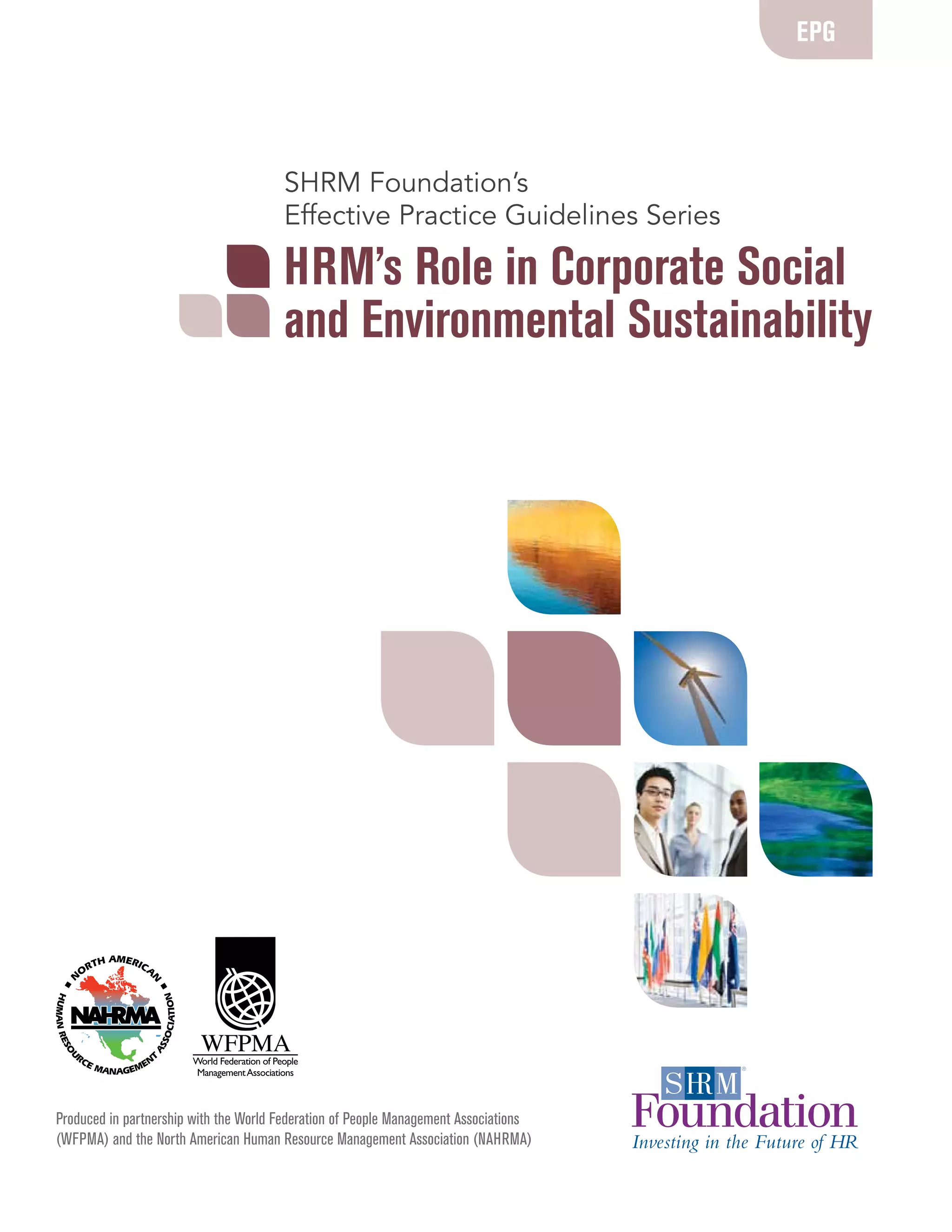
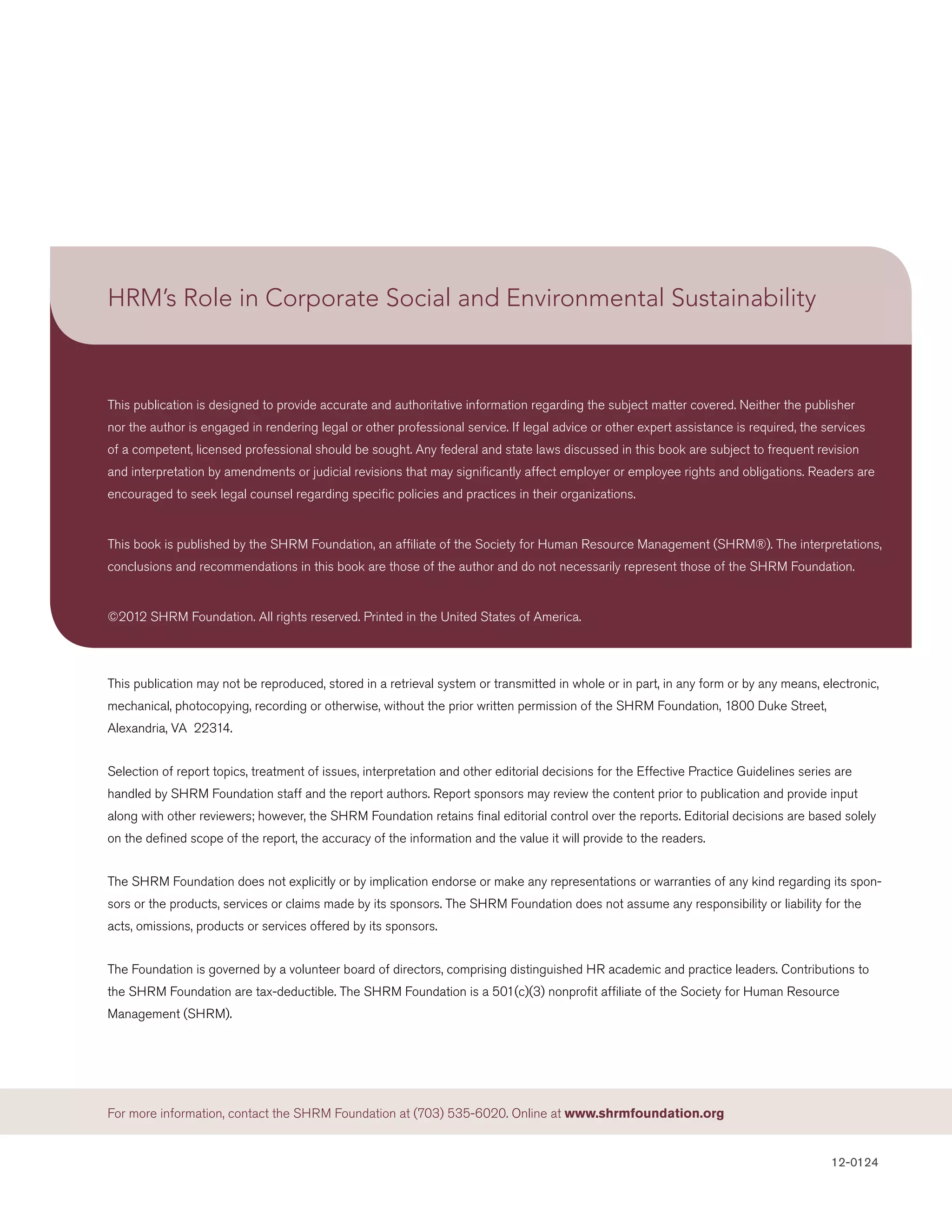
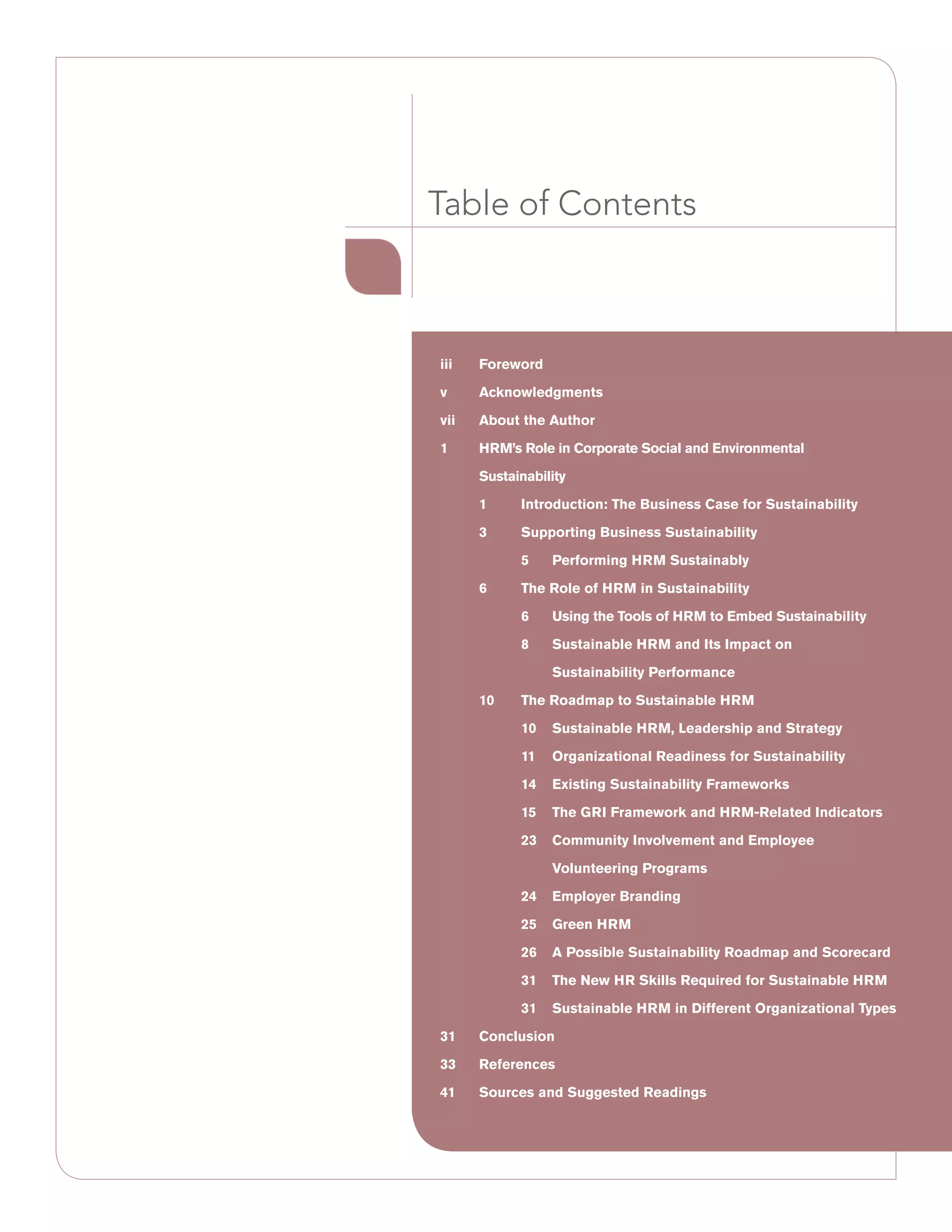
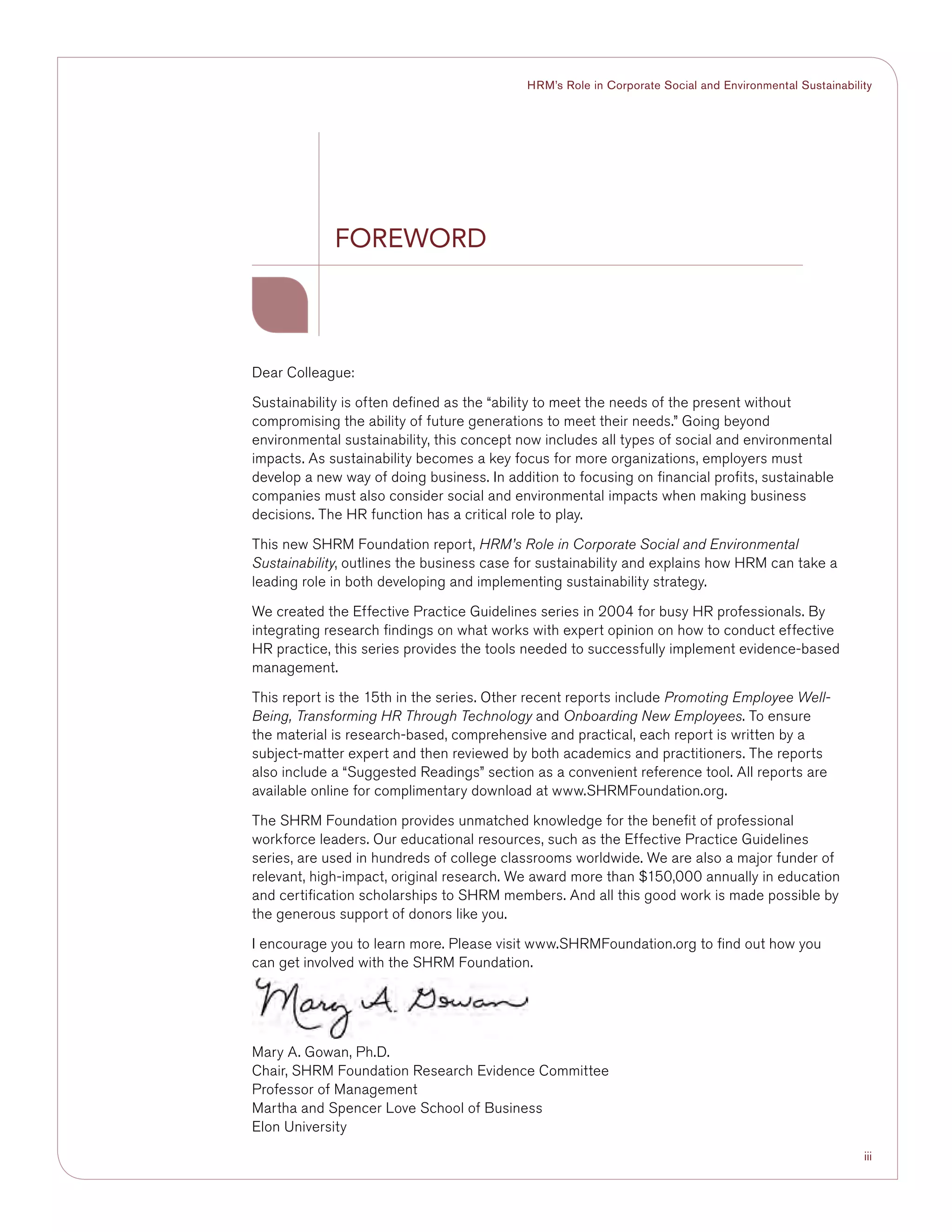
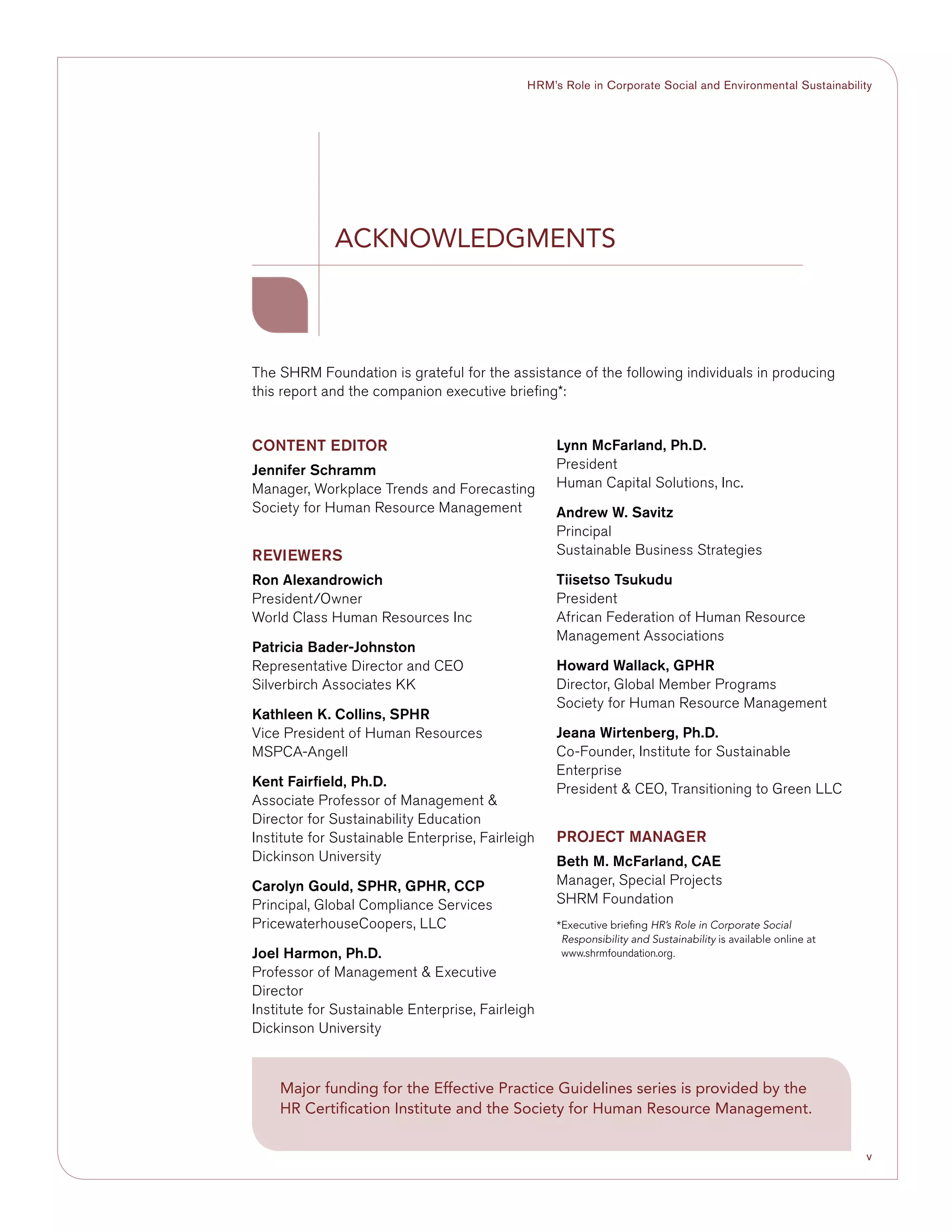
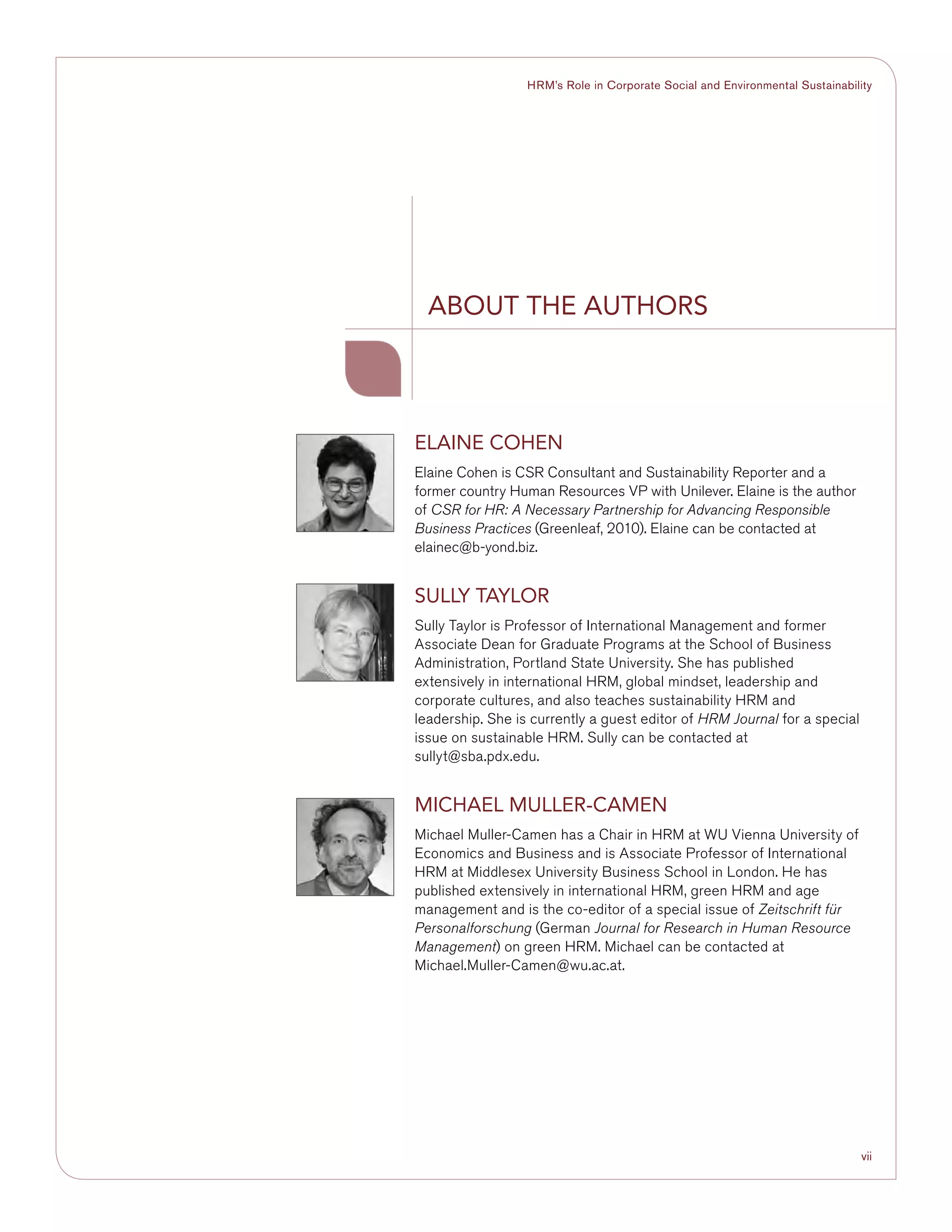

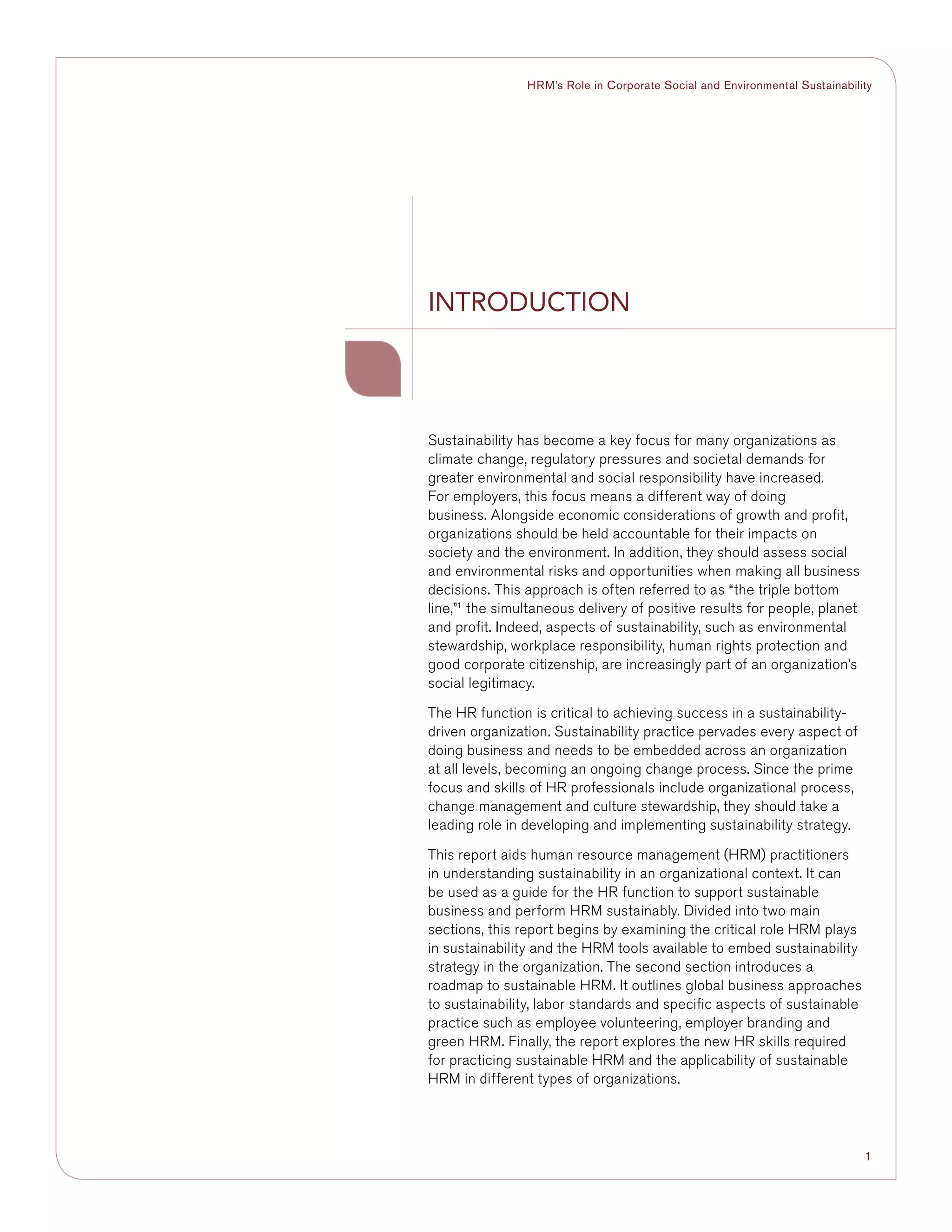
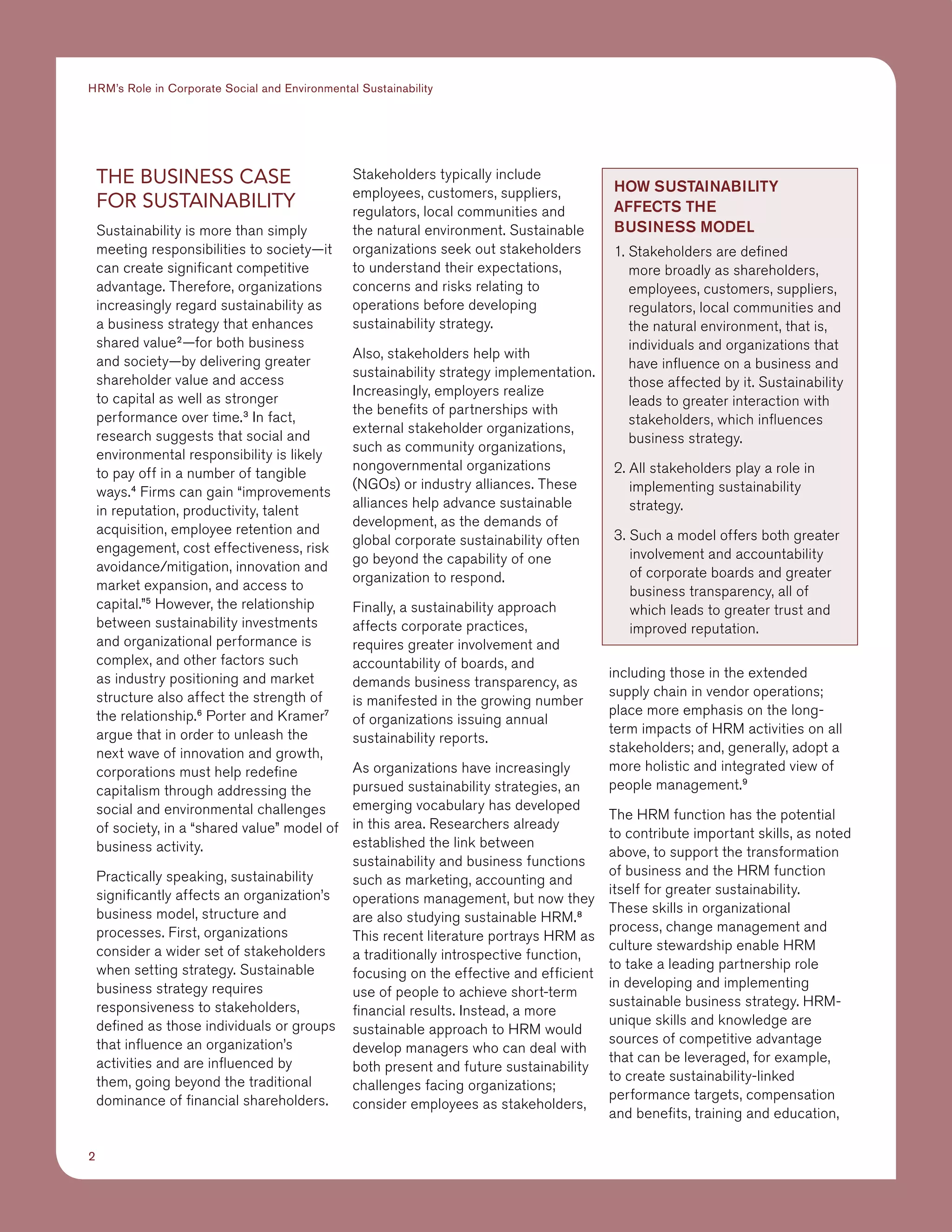
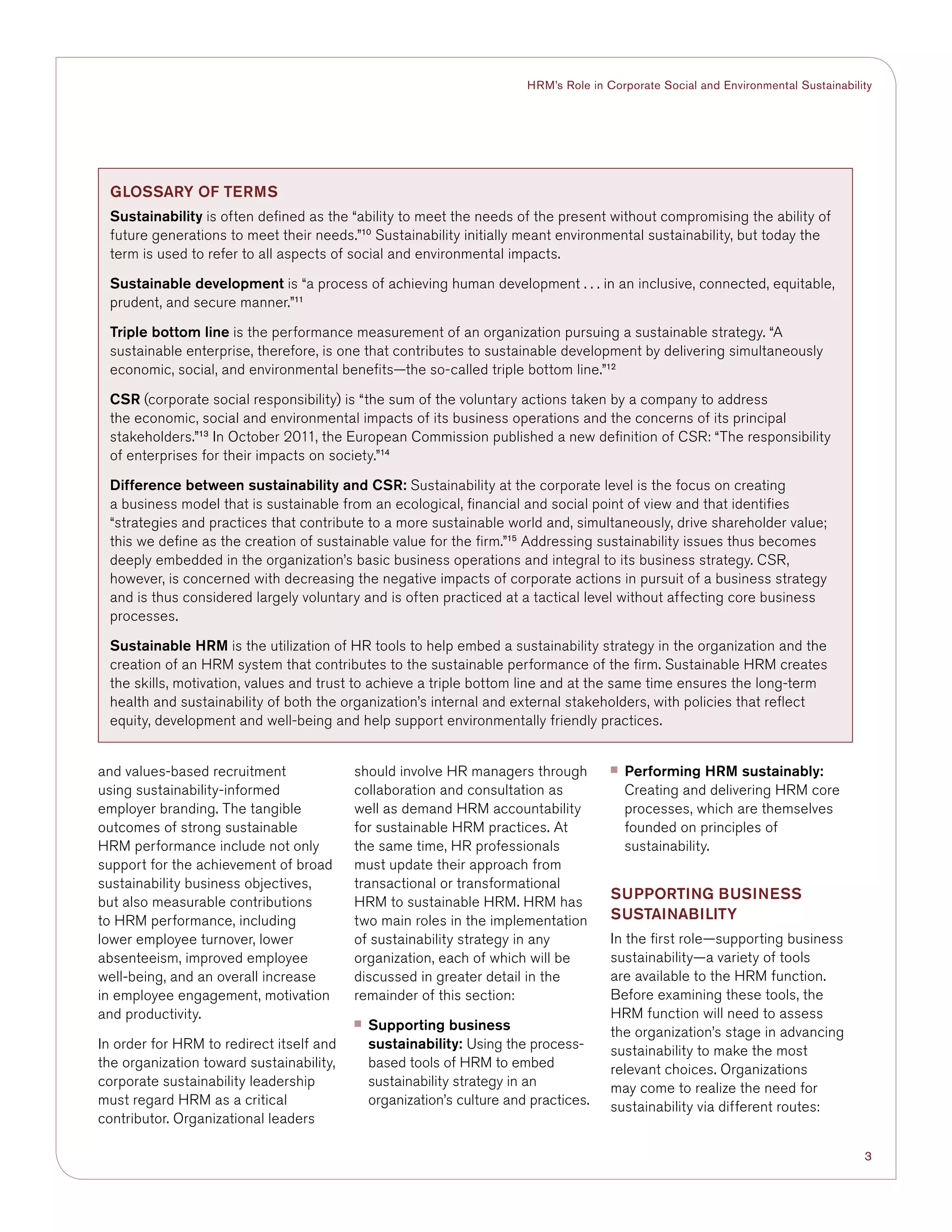
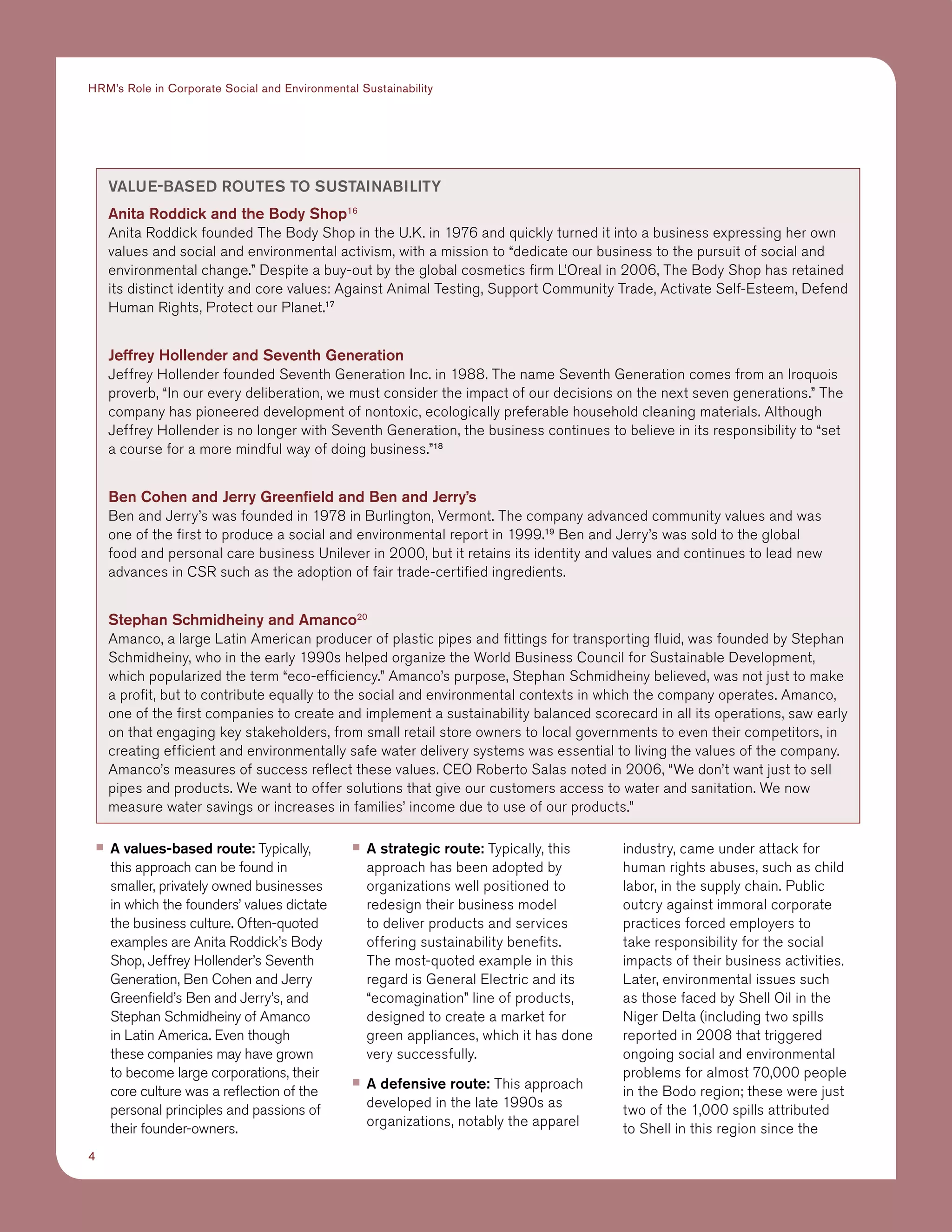
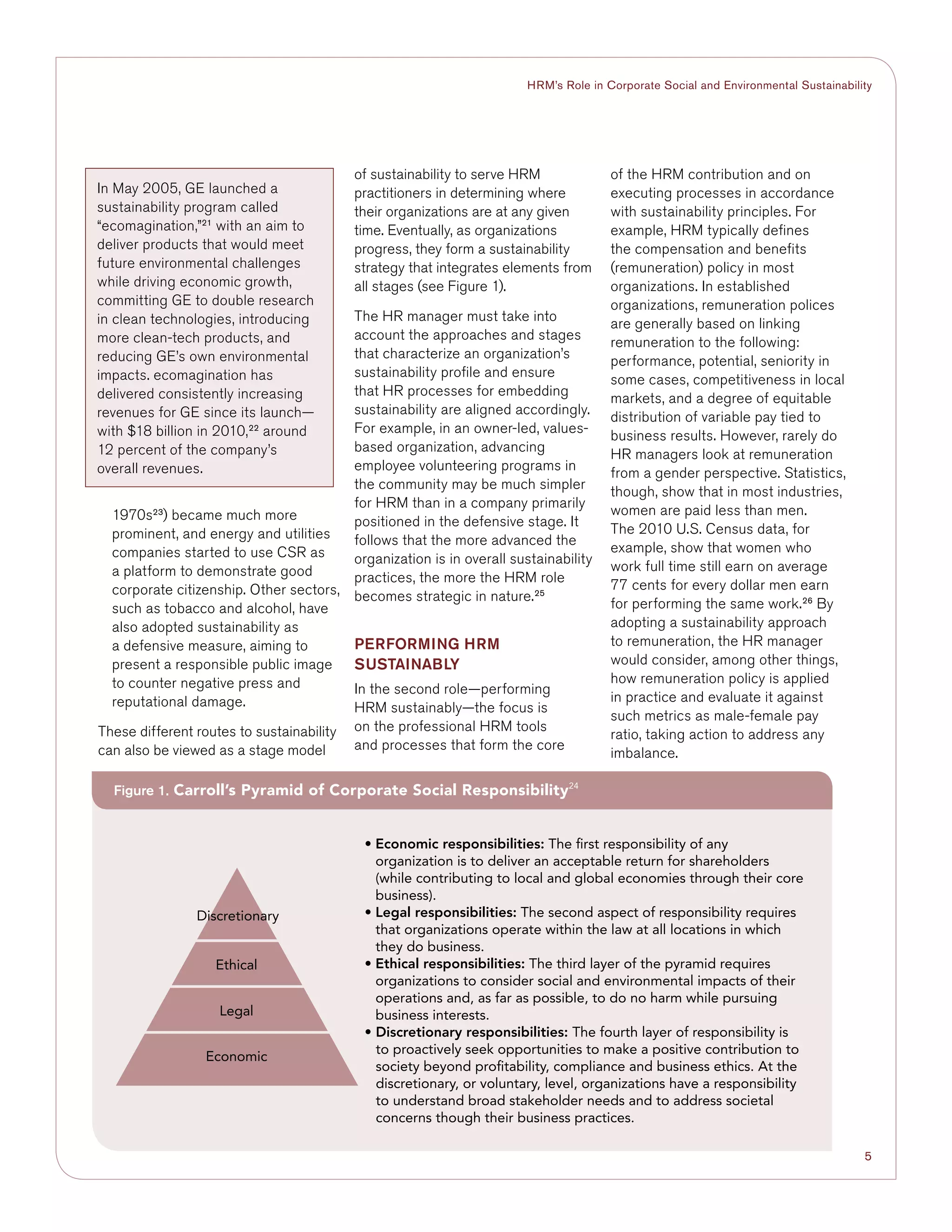

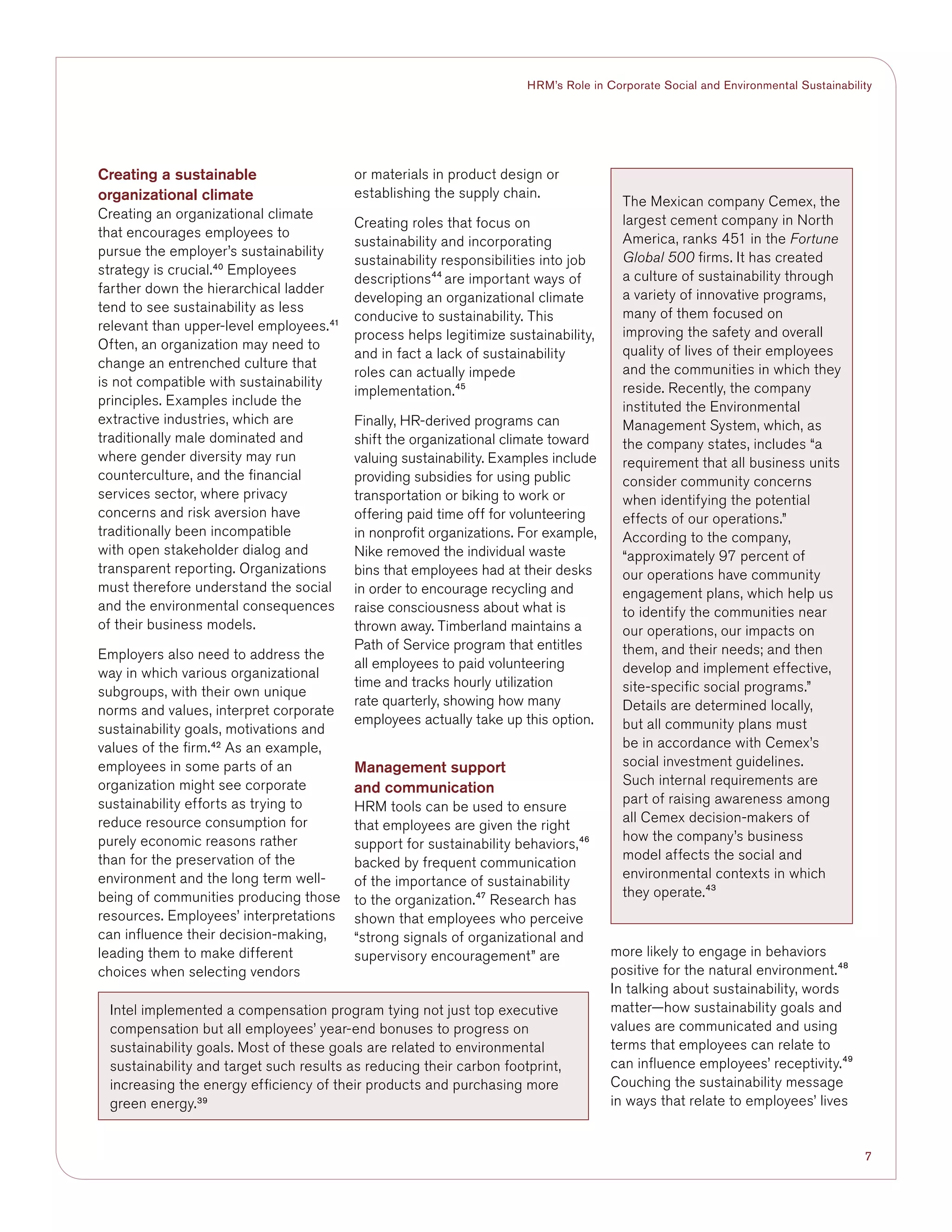
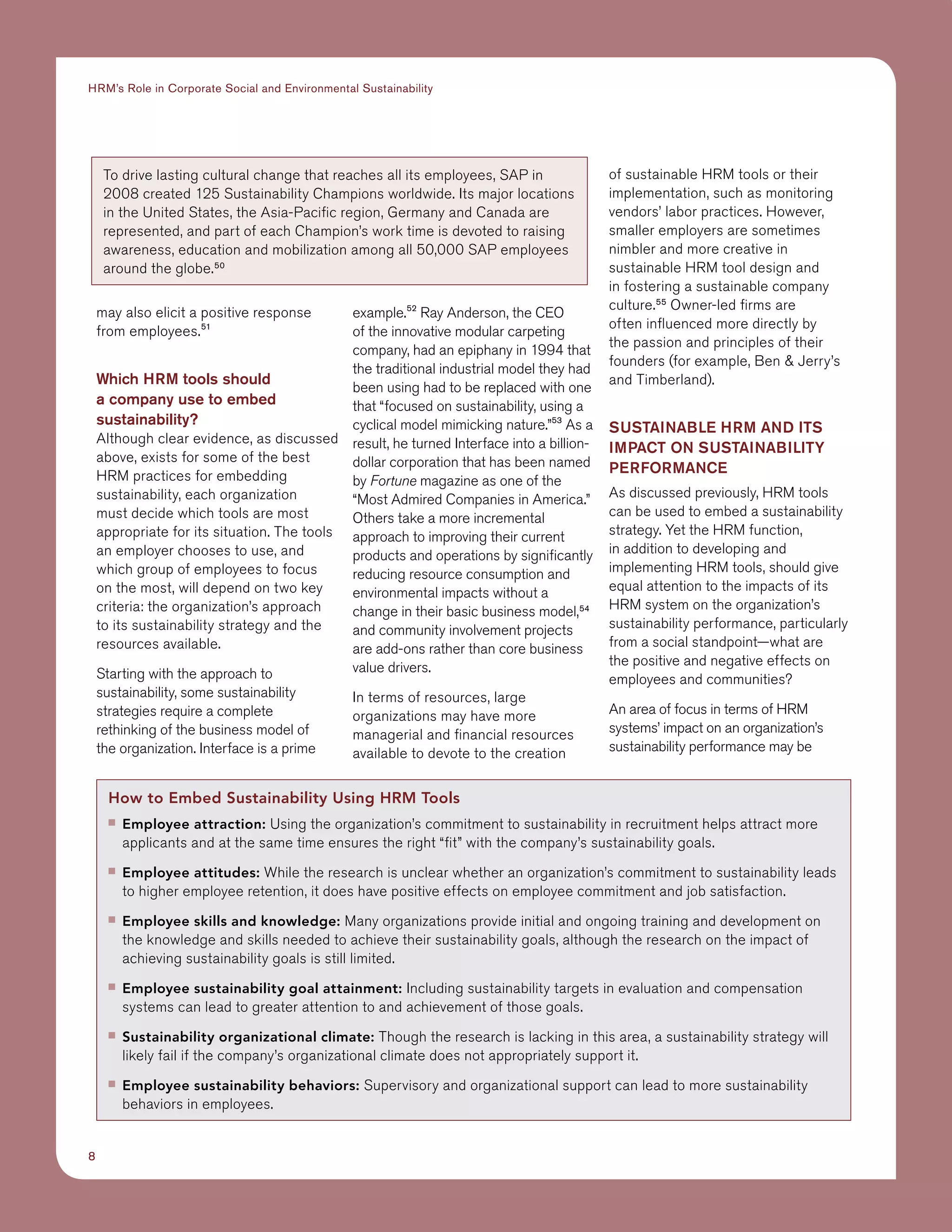
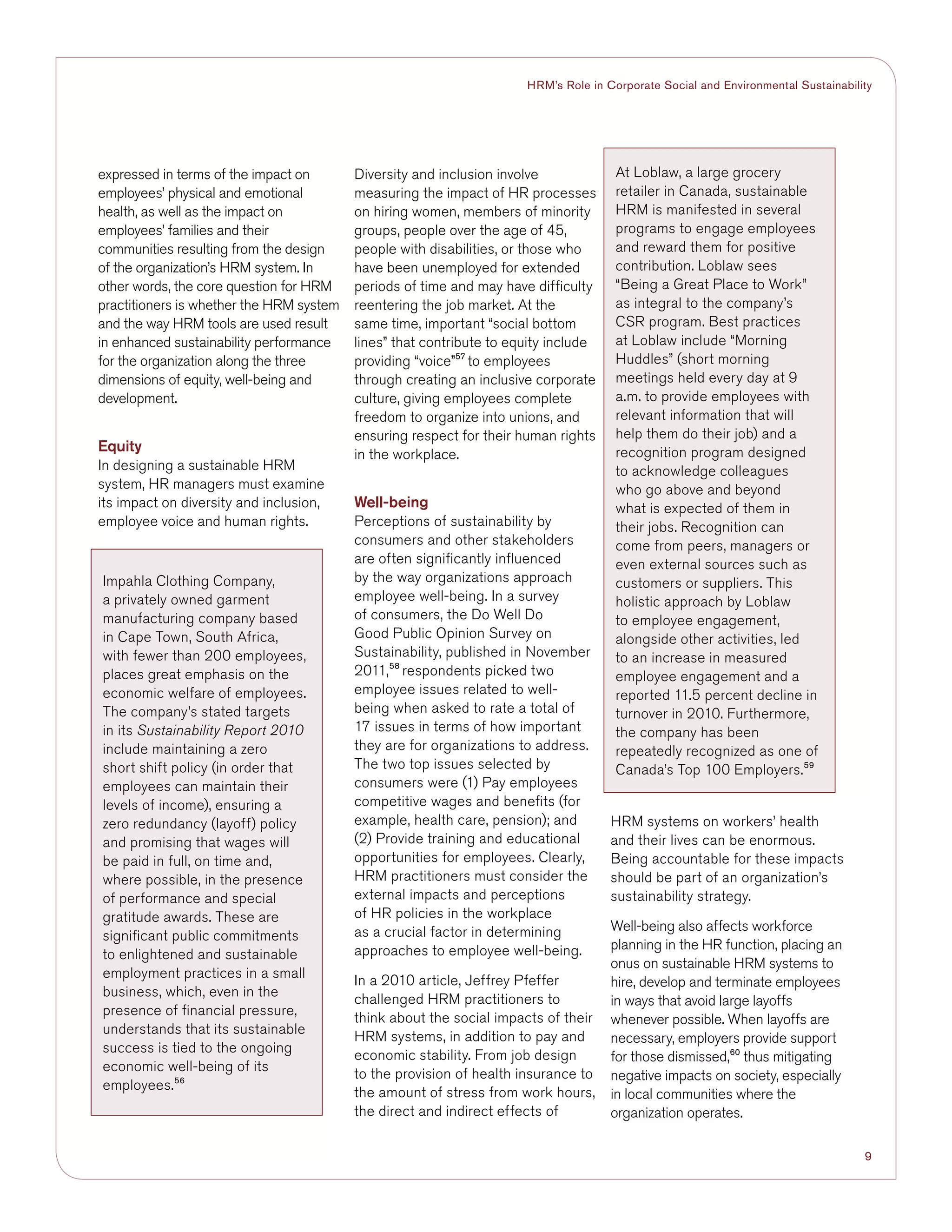
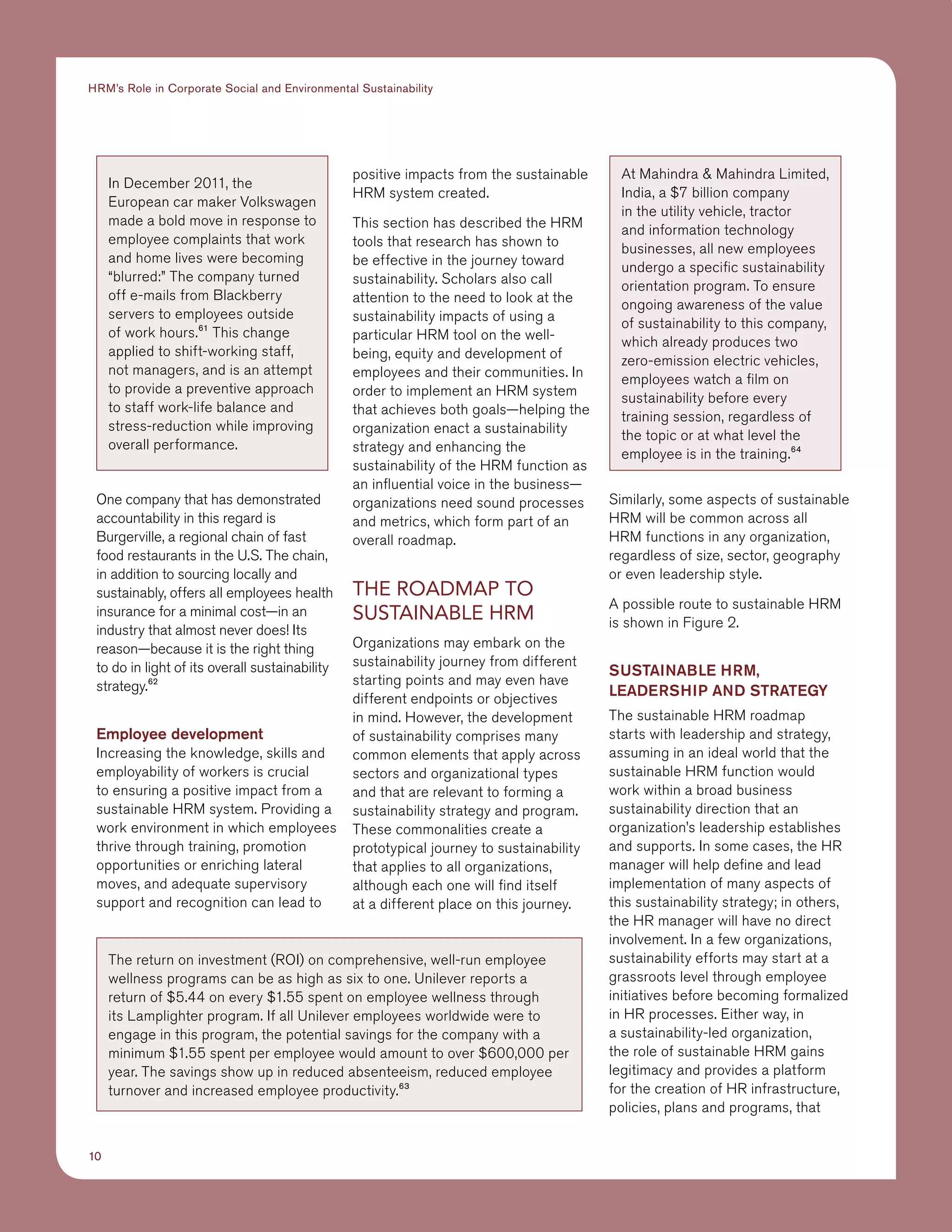

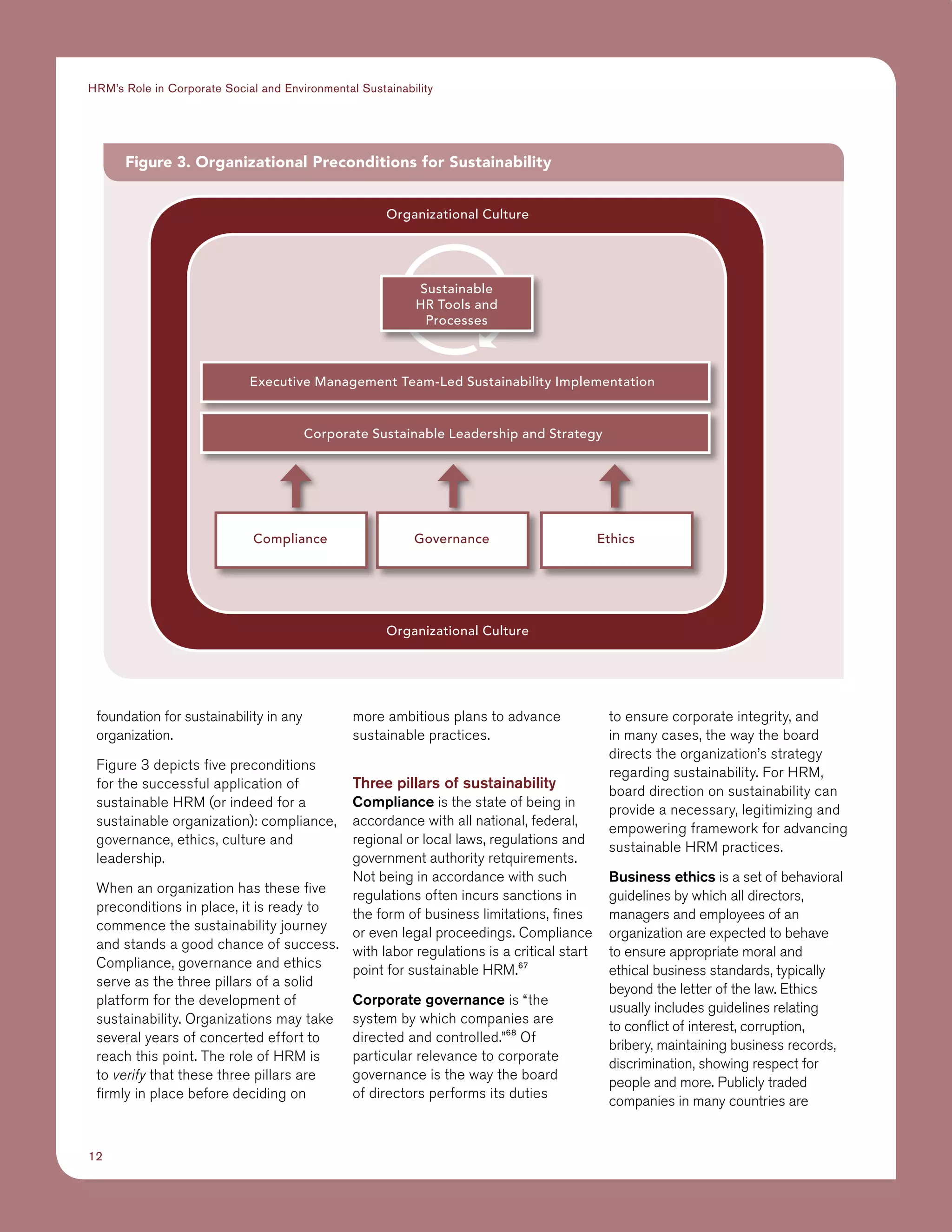
![13
HRM’s Role in Corporate Social and Environmental Sustainability
required to develop a formal, written
code of ethics, which serves as a
framework for business behavior.
Often such a code is linked to core
business values and corporate
culture. For sustainable HRM,
having a strongly articulated and
enforced ethical corporate stance can
provide an effective springboard for
communicating sustainability values.
Corporate culture
What are the necessary
preconditions for sustainability in
terms of organizational culture? A
sustainable organization typically
promotes a culture of ethical,
respectful and integrity-driven
behavior, empowerment and
engagement of employees using
collaborative networks, diversity
and inclusion, open and interactive
dialog with stakeholders, business
transparency, and business
processes that include social and
environmental considerations.
Equally, the sustainable organization
tends to build a corporate identity
aligning itself with the principles of
sustainability.70
Unilever recreated its corporate vision
and mission nearly 10 years ago: “We
meet everyday needs for nutrition,
hygiene and personal care with
brands that help people feel good,
look good and get more out of life.”
This is a compelling, highly accessible
social mission, appealing to external
and internal stakeholders and having
the potential to engage employees at
a deeply emotional level. It is far more
compelling than the former purpose
that emphasized understanding
the “aspirations of our consumers
and customers and respond[ing]
creatively and competitively with
branded products and services.” More
recently in 2010, Unilever published
a “Sustainable Living Plan” that
established a target to “help more
than one billion people improve their
health and well-being.” Unilever’s
167,000 employees are encouraged
to understand how their roles
contribute to a sustainable world,
rather than simply to improve the bank
balances of Unilever’s shareholders
and investors.71
Organizations can often support
cultural change by starting with small
actions and practical changes in
behavior, prior to implementing a long
process to embed a sustainability
culture. In some cases, small actions
can lead to big shifts in culture,
providing a more solid foundation
for cultural change at a more macro
level in the organization. Sometimes,
such changes can be developed at
a grassroots level, and HRM can
embrace and develop such initiatives;
in other cases, HRM practitioners can
initiate such change.
Leadership for sustainability
As in most organizations, change
needs to be driven by leadership. In a
sustainable organization, leadership
demonstrates its commitment to
sustainability through establishing
a sustainability vision, strategy and
commitment to action plans that
deliver sustainable growth.
What can the HR manager do to promote a corporate culture that is receptive to sustainability?
Beyond articulating and leveraging the organization’s social mission, HR managers can promote some practical
aspects of corporate culture to set an effective stage for developing sustainability. These might include the follow-
ing aspects:
■■ Embedding business ethics.
■■ Employee updates on business results, programs and developments.
■■ Open exchanges or round table discussions with senior management.
■■ Development of social networks for internal collaboration and communication.
■■ Suggestion boxes or programs for employees to contribute new ideas.
■■ Encouragement of processes—meetings with customers, suppliers and community groups— to elicit stakeholder
input about their expectations of the organization.
The online auction company
eBay has engaged hundreds
of thousands of employees in
a sustainability culture. It all
started with an employee-driven
suggestion—eliminate Styrofoam
cups from the break room and use
recyclable cups. As employees
began to understand how this one
action was a way for them to make
a difference, more suggestions
emerged, and after some time, the
CEO of eBay himself proposed
ideas to make eBay more
sustainable. In this case, a small,
practical action changed behavior
and led to the birth of a new
culture of sustainability at eBay.69](https://image.slidesharecdn.com/4-12csrreportfinalforweb-150522040012-lva1-app6892/75/web-report-20-2048.jpg)
